Founded in 1538 by Spanish conquistador Gonzalo Jiménez de Quesada, Bogotá has evolved from a small colonial town into the political, cultural, and economic heart of Colombia. Spanning 1,775 square kilometers (686 square miles), it’s similar in size to Houston and slightly larger than Delhi and São Paulo. The city’s population is estimated to be between 8 and 11 million, which is comparable to New York and Bangkok. Bogotá is divided into 20 localities, each with its own character, featuring a blend of modern skyscrapers, low-rise buildings, and historic edifices. I barely scratched the surface of what there is to explore.
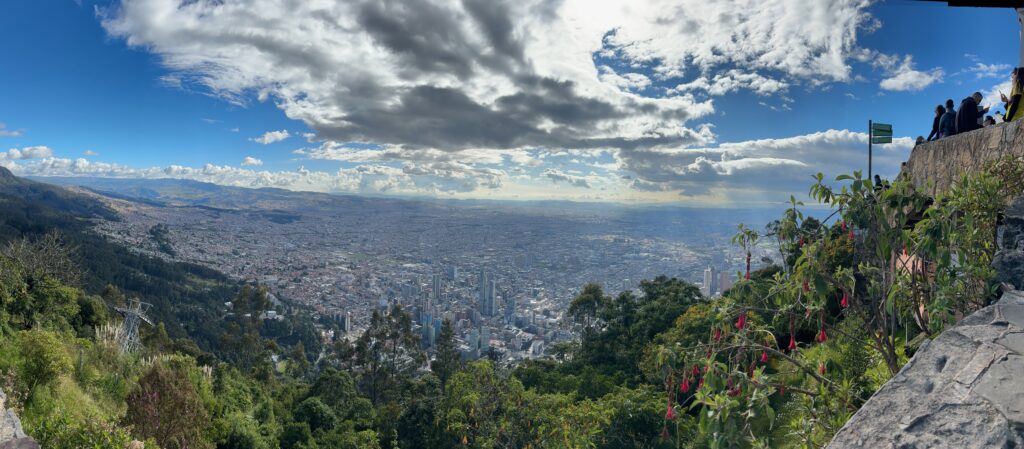
Situated on a high plateau in the Andes at approximately 2,640 meters (8,660 feet) above sea level, making it one of the highest capitals in the world, the city is surrounded by mountains, with Monserrate and Guadalupe being the most prominent, offering a dramatic backdrop to the bustling metropolis.
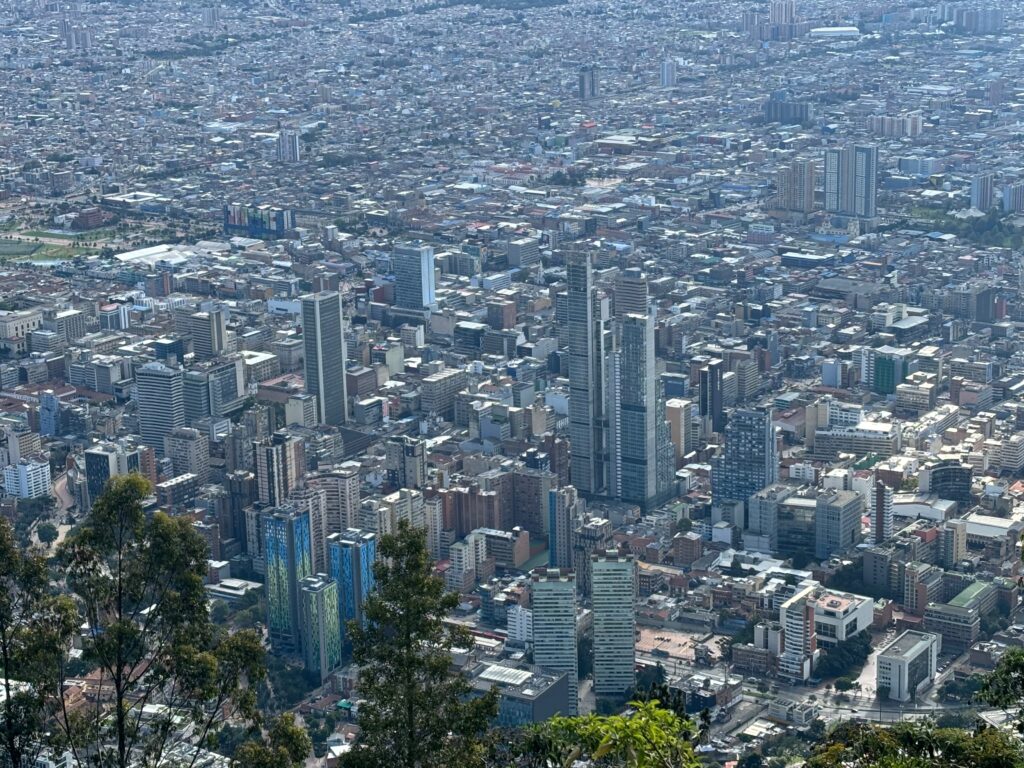
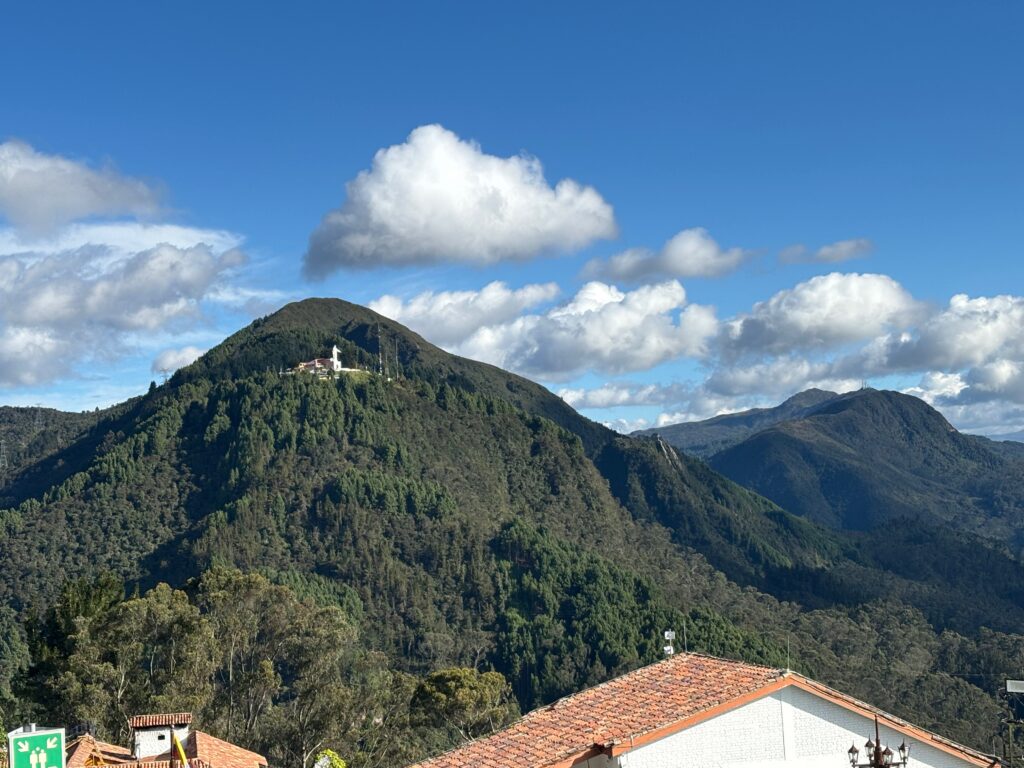
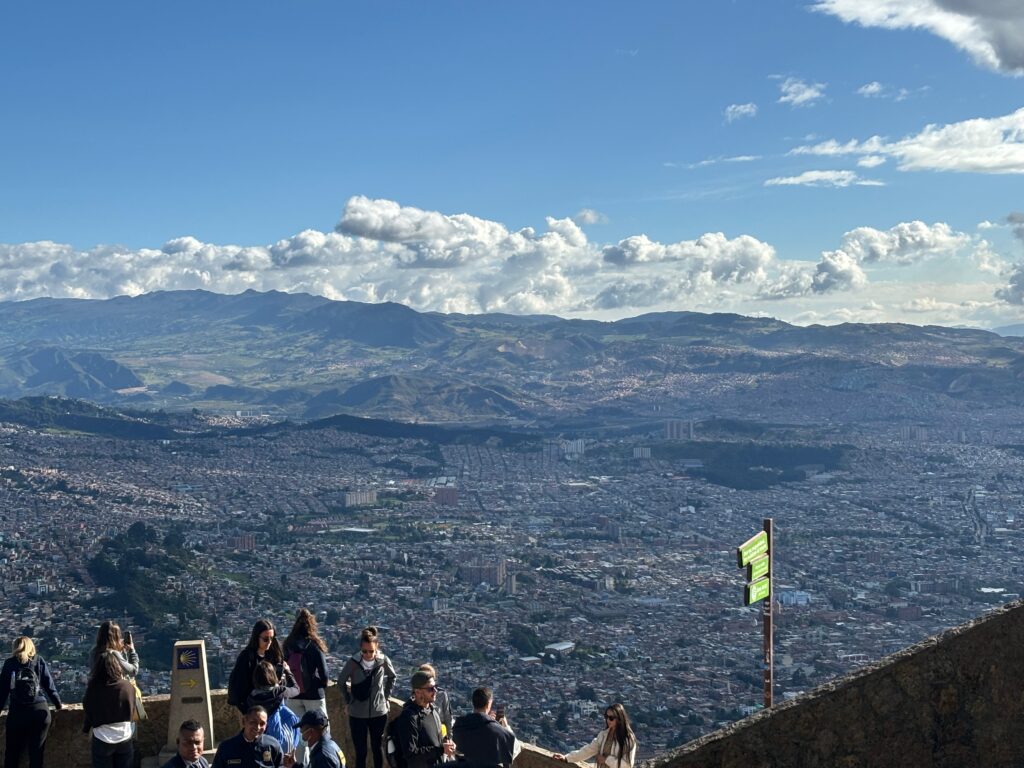
Waking up to see a stunning mountain view was the very first highlight of a city of highlights. Those mountain peaks provide major inspiration for Colombia’s massive capital city.
Summary
- My Overall Rating: 71%.
- My Ranking out of my top 243 visited Cities: 160th place -if it had a crime rate similar to London it would be well within my top 100 cities
- Global Ranking: The Mercer Quality of Living City Ranking places Bogotá 129th out of 230 in 2024, indicating room for improvement in the city’s overall quality of life. The EIU – Best Cities Ranking 53rd out of 70
- Why it should be visited: Vibrant cultural and food scene, rich history, and stunning mountain views.
- Negatives: High altitude, traffic congestion, and major concerns about safety due to high petty crime and a relatively high murder rate
- Would I return?: Yes, I would like to explore more but it is not my first choice in Colombia I liked Medillin, Cali and Cartagena better
Getting There
Bogotá is approximately 1,000 kilometres (620 miles) from the Caribbean coast and 1,400 kilometres (870 miles) from the Amazon rainforest. Bus and car journeys are slow due to the twisting roads that climb up, down, and around. Even so, I met people who swore by the buses, especially the night sleeper buses. There are no long-distance passenger trains in Colombia.
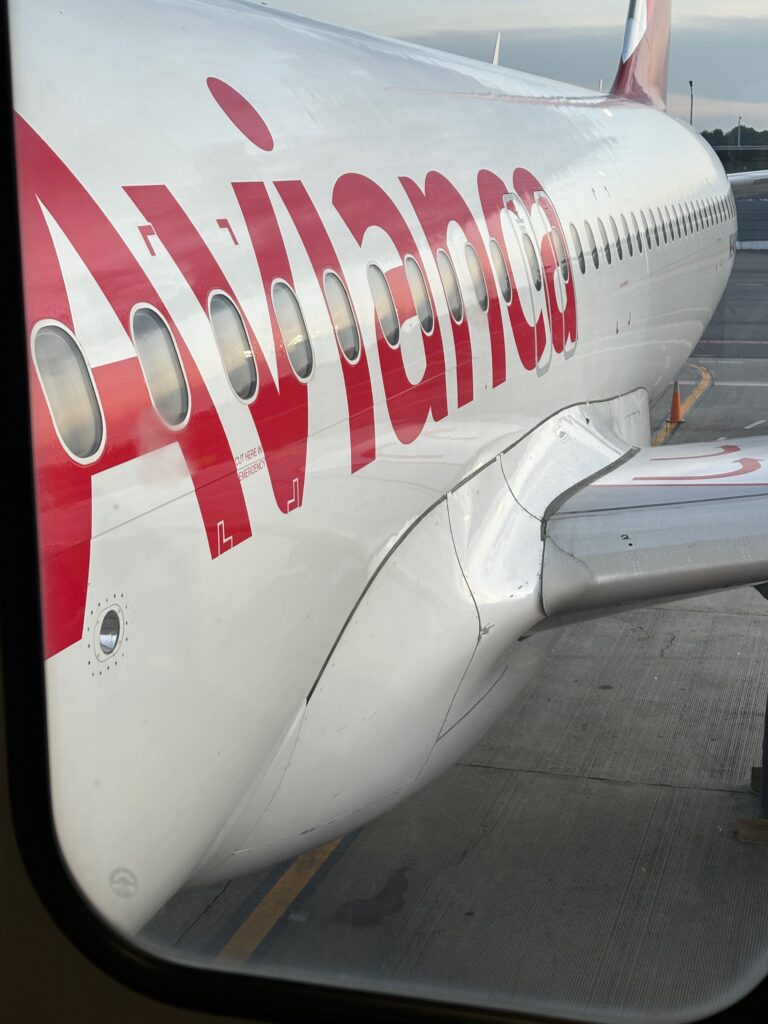
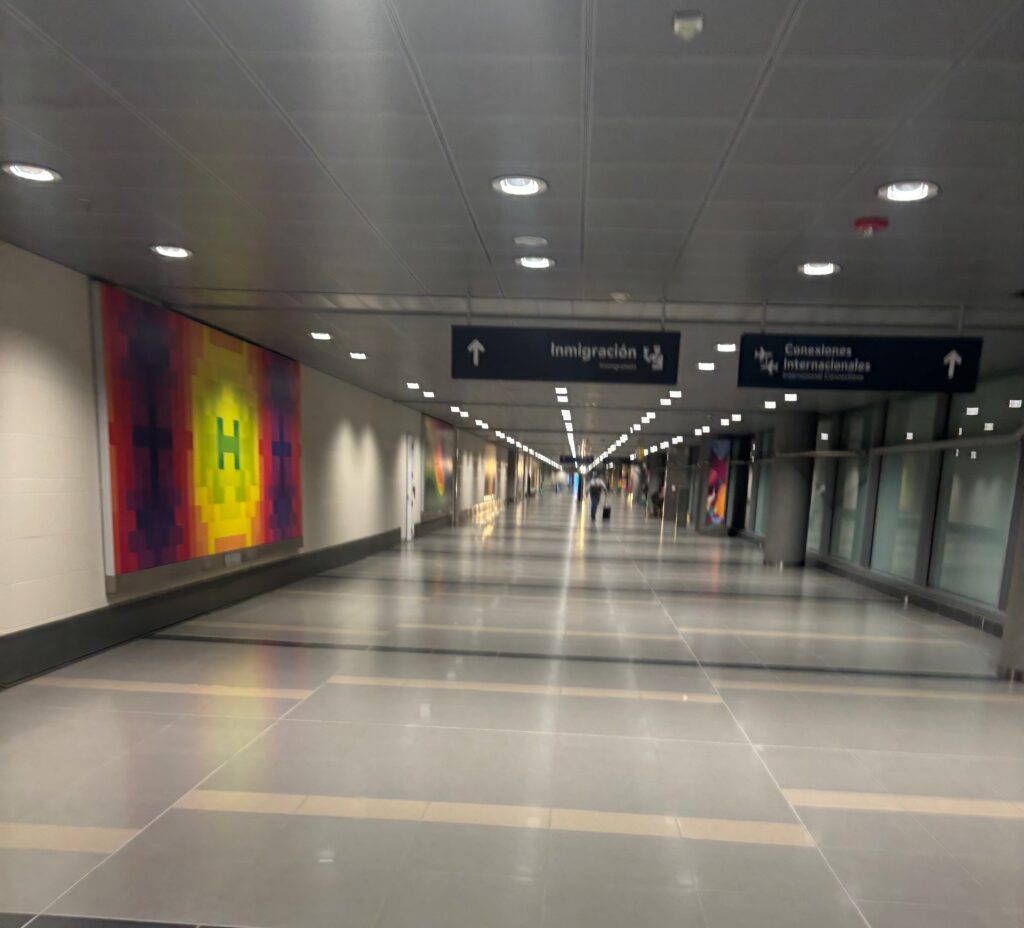
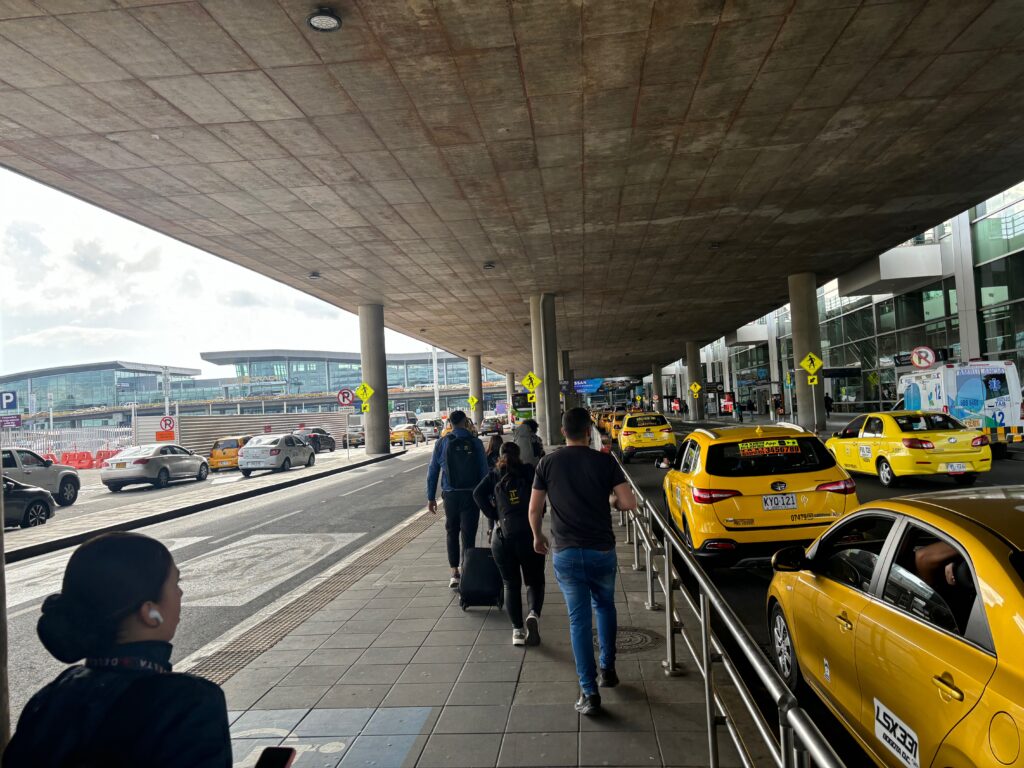
At 2,548 meters above sea level, this is the highest airport I’ve ever been to! Bogotá (BOG) airport serves as a key hub for domestic and international travel. Planes connect Bogotá non-stop to:
- Europe (Madrid, London)
- Latin America (e.g., Buenos Aires, La Paz, Lima, Mexico City, Quito, Rio, San Salvador, Santiago (which is where I flew from))
- The USA (Atlanta, Houston, Miami, New York City, Houston)
- All cities in Colombia: Barranquilla, Cartagena, Cali, Medellin, Santa Marta etc
it’s been quite the experience. My second and third highest airports are Mexico City and Medellín. Fun fact: The lowest airport I’ve visited? Amsterdam, sitting minus three metres below sea level!
Arriving in Colombia is generally straightforward. Both immigration and customs processes are typically smooth, though you can expect extended waits during busy times.
Getting Around: 78%
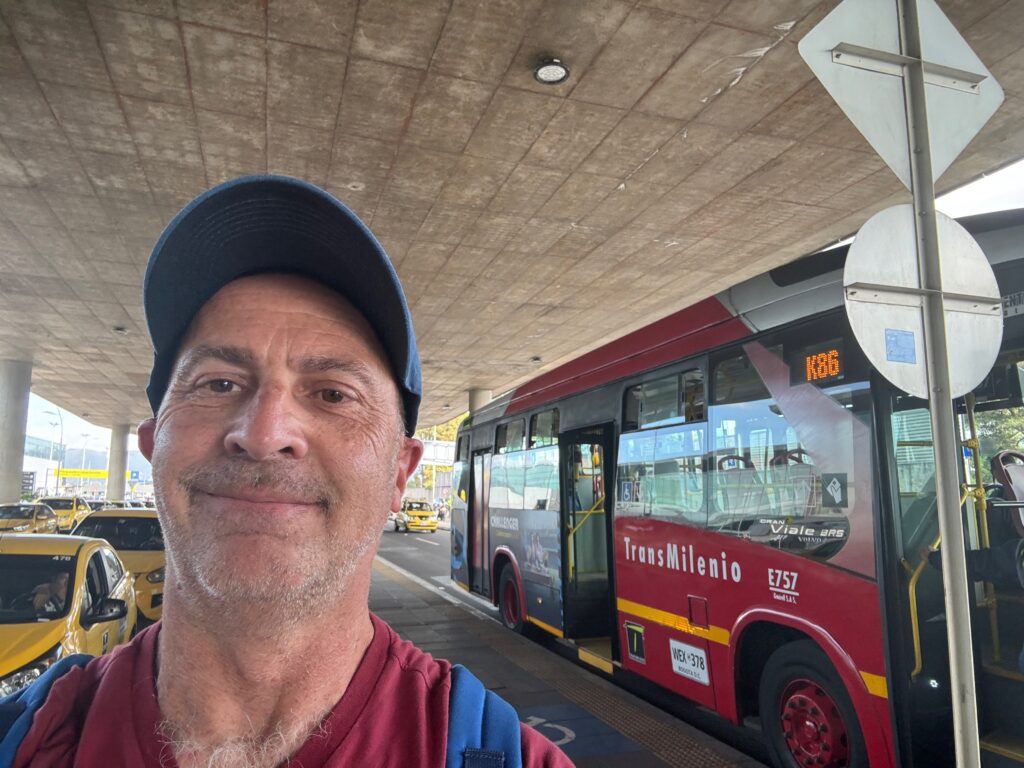
Here is a reason for the nerdy smile in this picture.
As a transport enthusiast, I’ve been obsessed with riding Bogotá’s TransMilenio since 2008. Finally, experiencing it was a dream come true. TransMilenio is Bogotá’s renowned Bus Rapid Transit (BRT) system launched in 2000. It’s integral to the city’s public transport, offering a reliable alternative to traditional buses and cars.
TransMilenio spans over 114 km (71 miles) with 12 lines and 150 stations. Its 2,000 articulated and bi-articulated buses carry 2.5 million passengers per day. Feeder buses connect to the main system, allowing people to catch a bus from their neighbourhood and transfer to the express lines across the city.
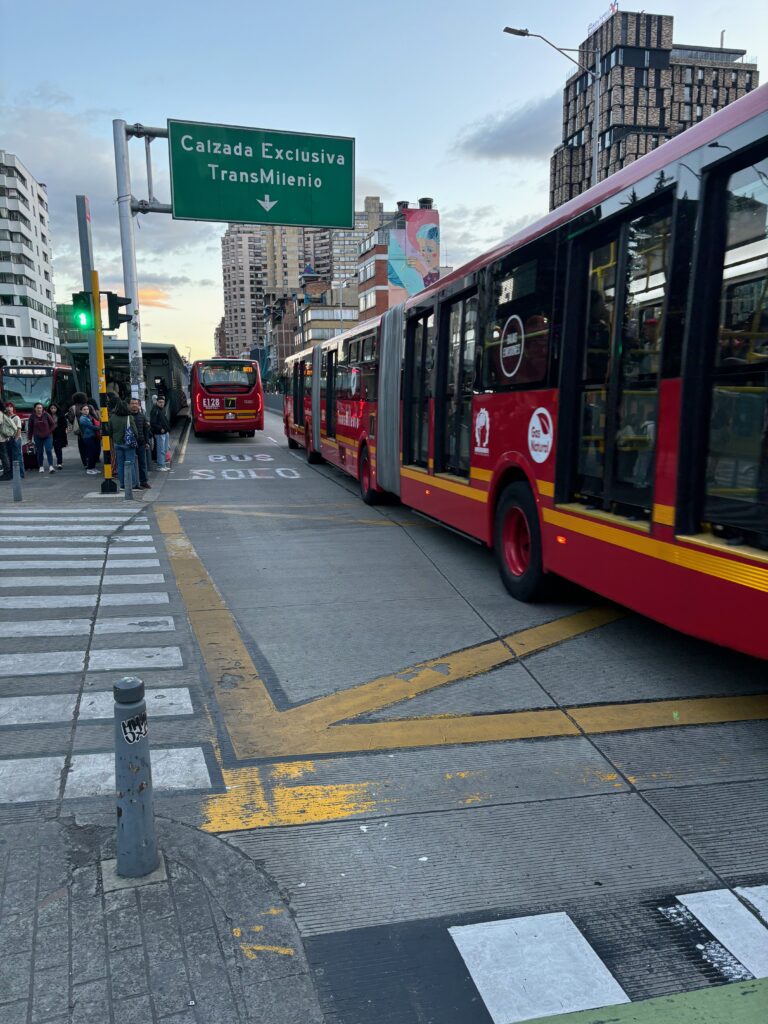
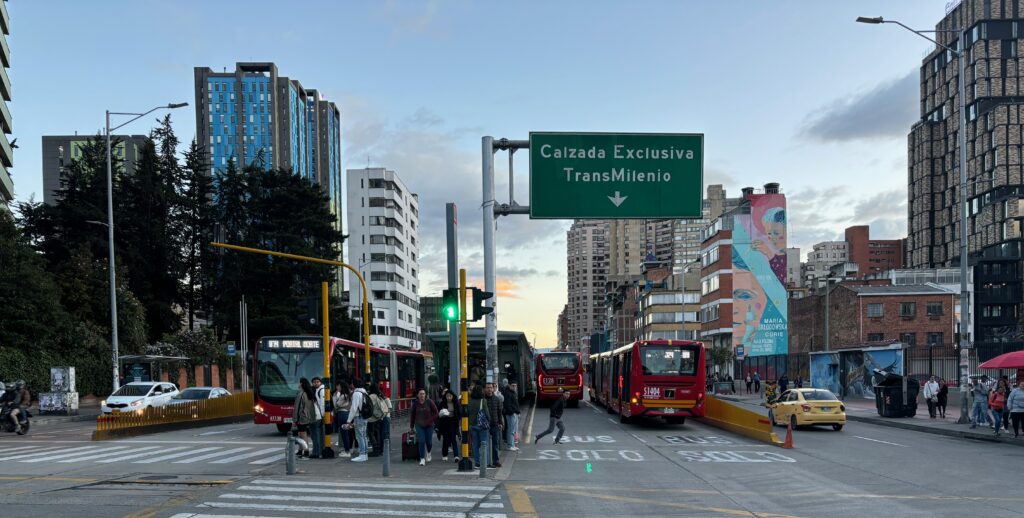
inspired by Curitiba’s BRT system in Brazil, Bogotá took that concept and improved it, becoming one of the leading transit systems on the planet! It was designed to provide the efficiency and capacity of a metro but at a fraction of the cost. TransMilenio offers a model that has been copied worldwide.by carrying millions of passengers daily. The system was built on four key pillars:
- Respect for life
- Respect for time
- Respect for diversity
- International quality
Buying tickets was straightforward; you need a rechargeable card, which you can purchase and top up at vending machines or ticket booths at the stations. I travelled from north to south and east to west, fulfilling my long-held TransMilenio dream.
People warned me it might be unsafe, but with 2.5 million riders, I felt fine. Usual precautions apply: keep your phone hidden, don’t display money, avoid looking like a tourist, and stay aware of your surroundings. Security guards are at every station, there are cameras on buses, and every bus stop has fellow passengers.
The system can be crowded, but after experiencing trains in cities like Mumbai, Manila, Bangkok, London, and Tokyo, I wasn’t fazed by the crowds. I was impressed by the efficiency, speed, and signage.
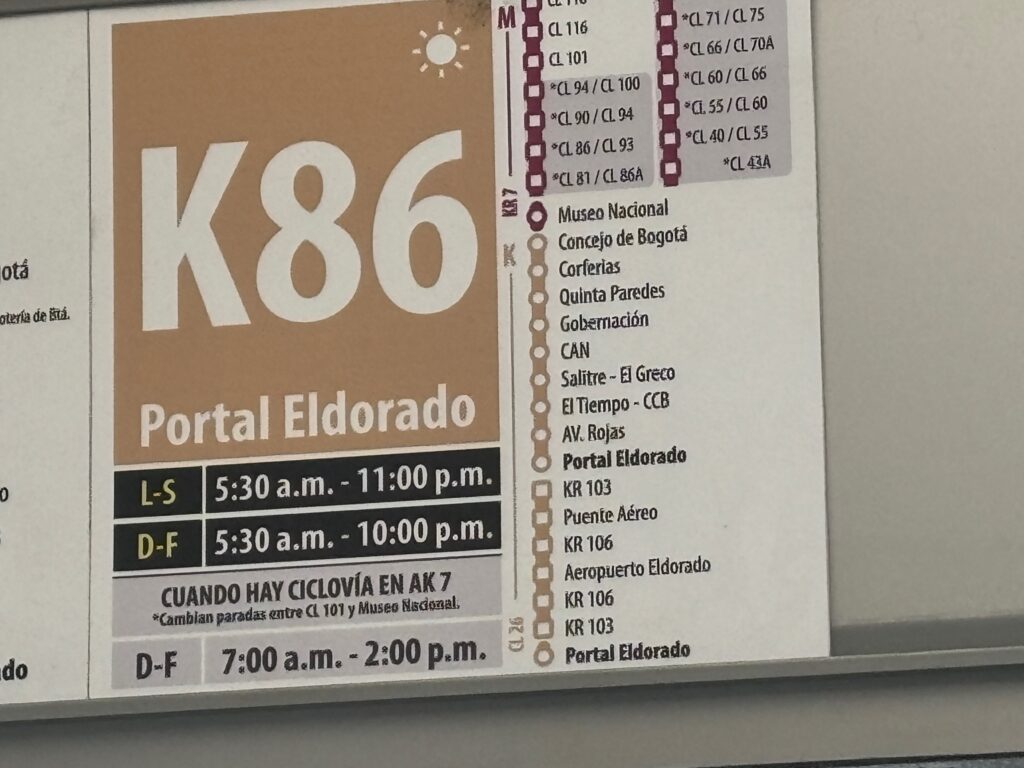
From El Dorado International Airport
You can ride TransMilenio buses from the airport. I would not recommend using it if you arrive at night. Just reduce your risk and grab a taxi, Uber, and shuttle services.
My Top Sights in Bogotá:
1.Cerro Monserrate:
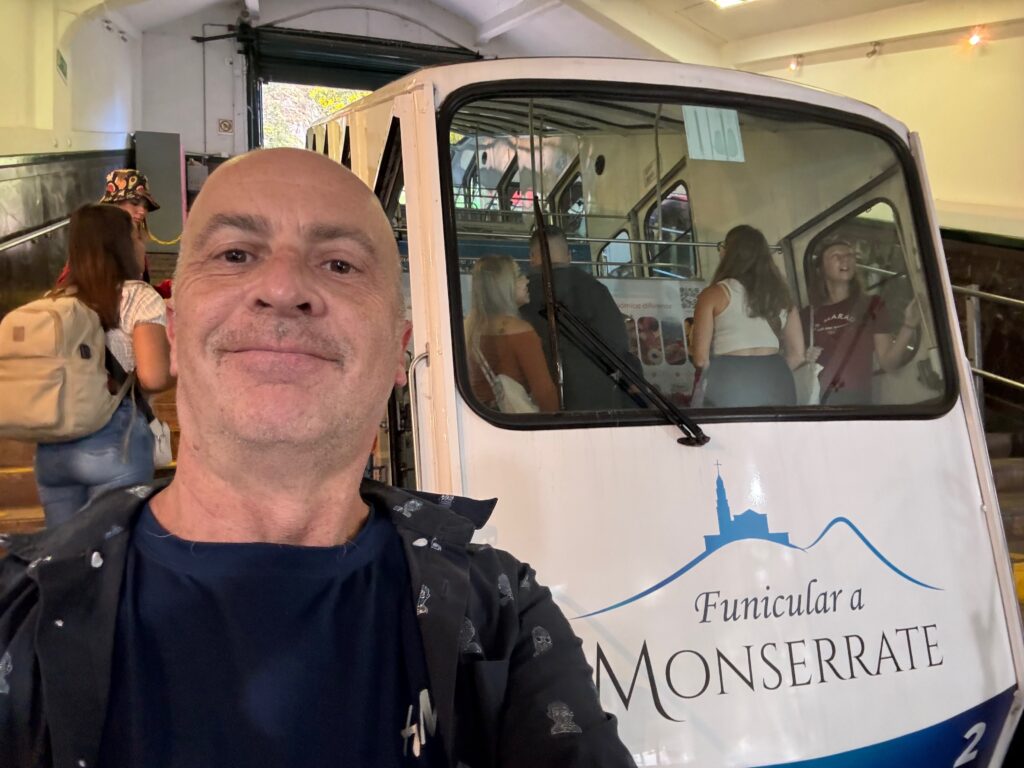
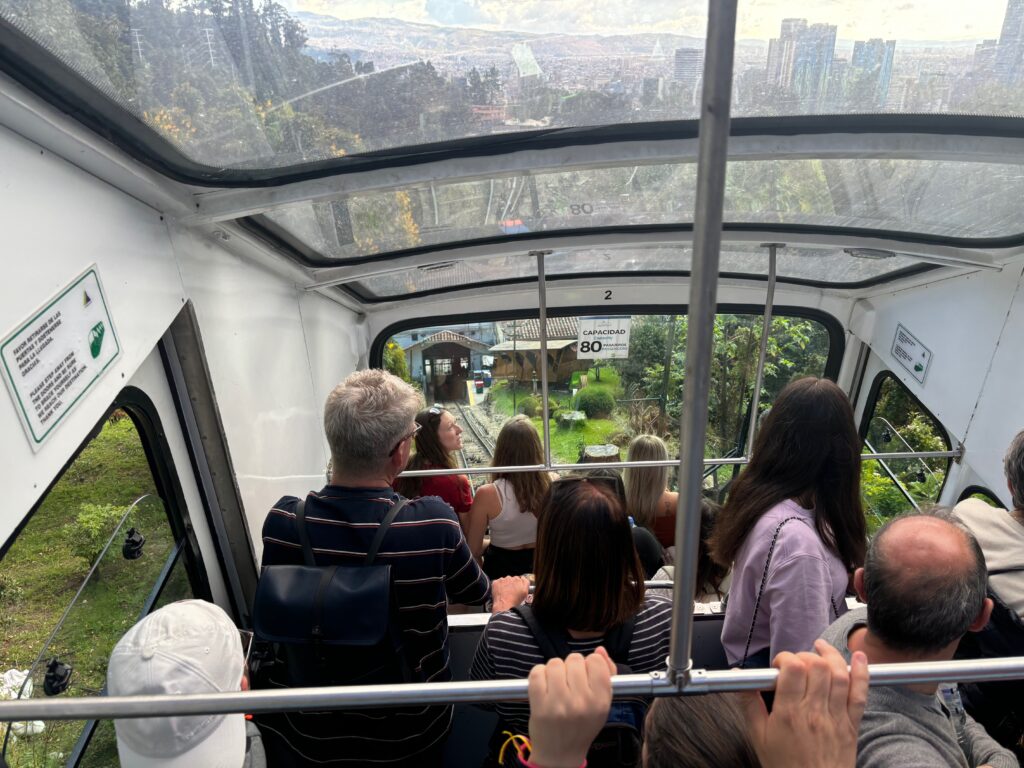
One of Bogotá’s most iconic landmarks, Cerro Monserrate is perched an impressive 3,152 meters (10,341 feet) above sea level and 500 meters above the city. I rode the funicular up to breathtaking views with a panoramic vista of the city and the surrounding Andes mountains
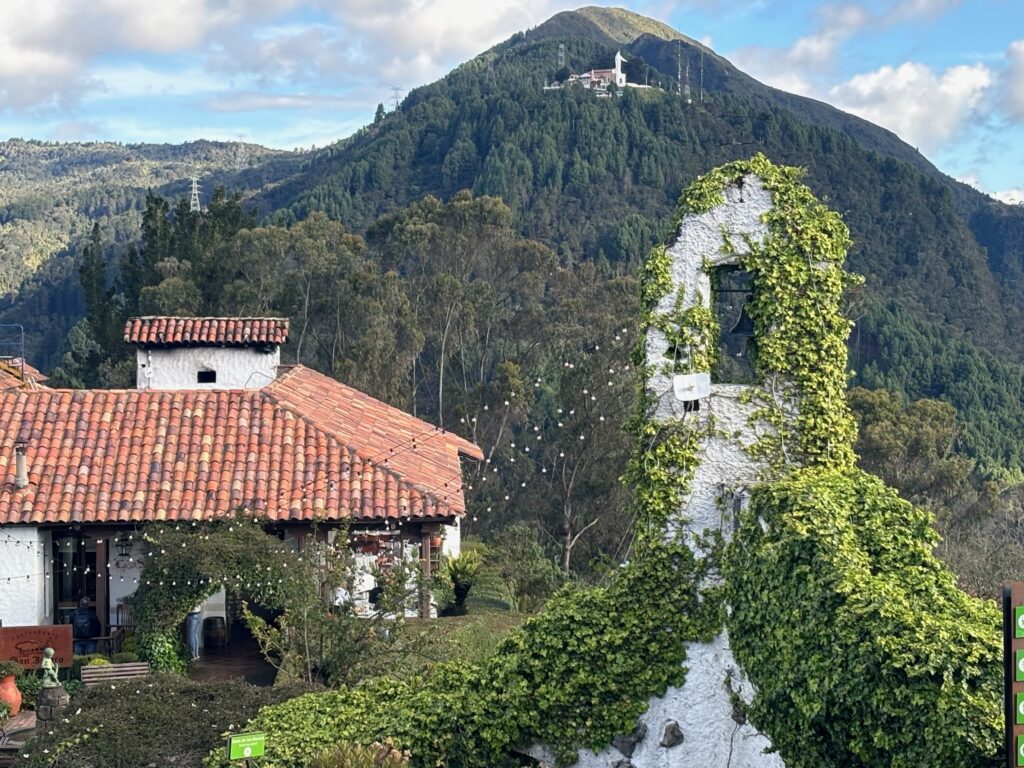
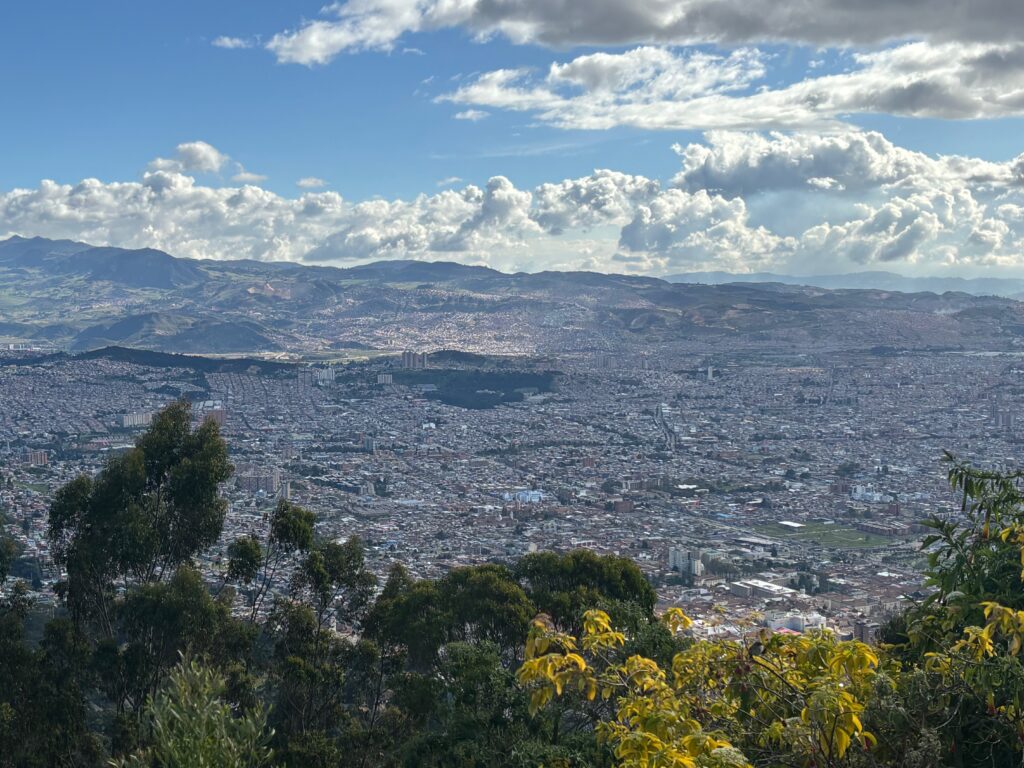
At the summit, I visited the Sanctuary of the Fallen Lord, a beautiful church and popular pilgrimage site. It features a revered statue of a Black Madonna, believed to date back to the 17th century when the church was first constructed. The Madonna is associated with protection, healing, and miracles.
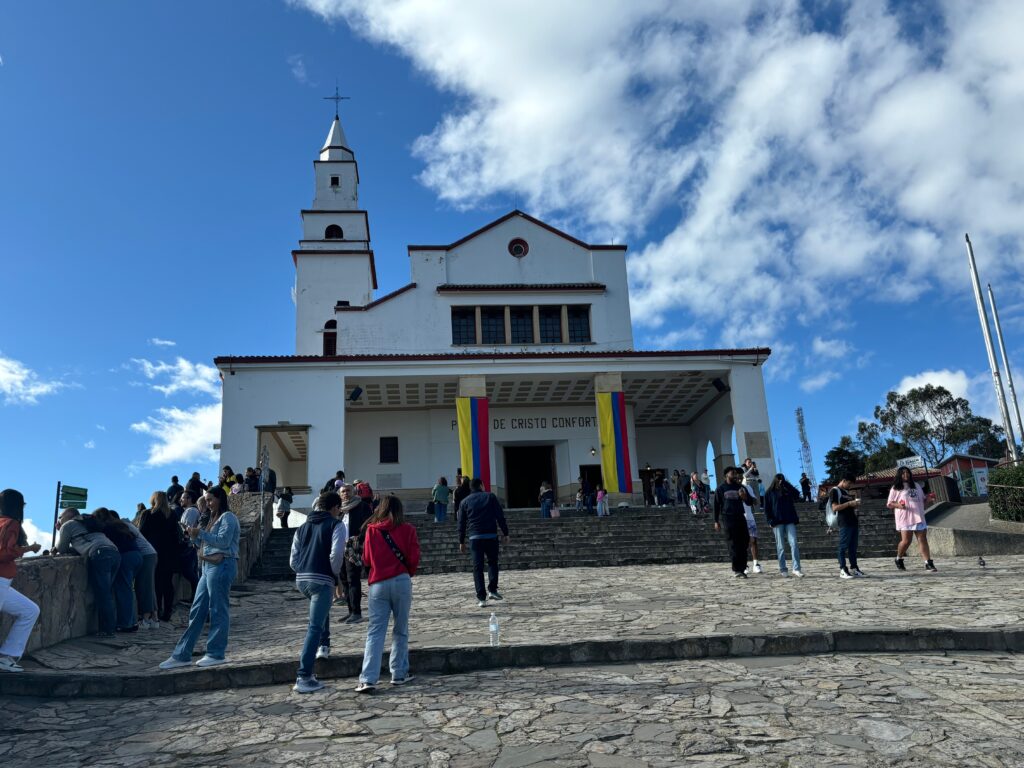
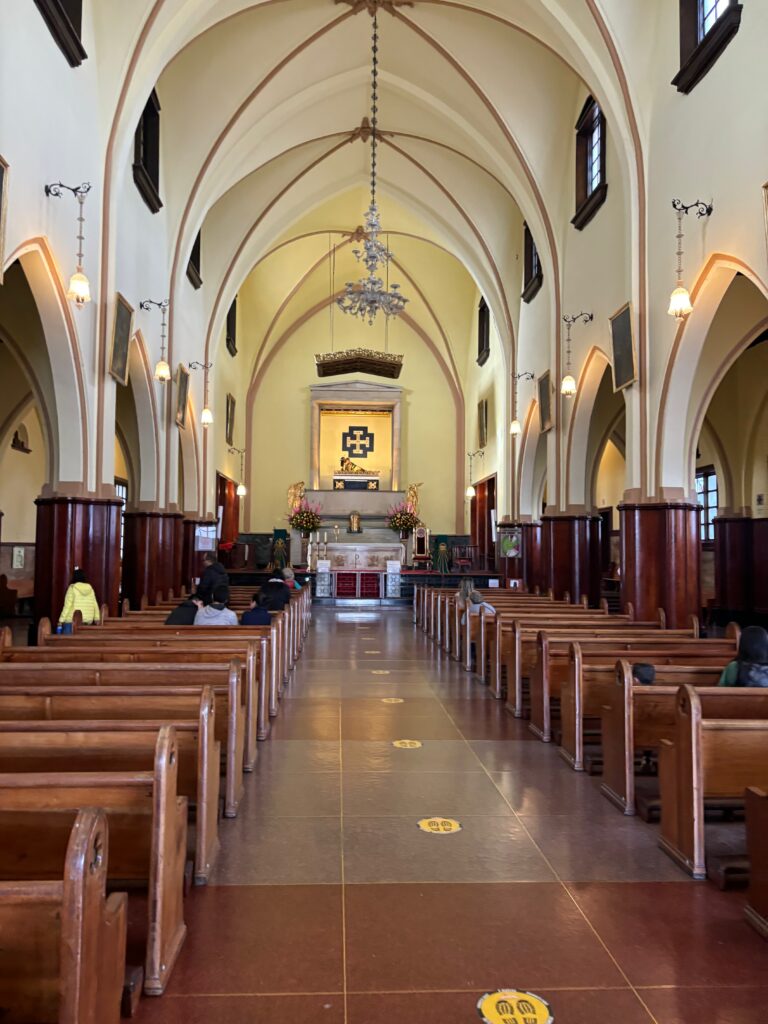
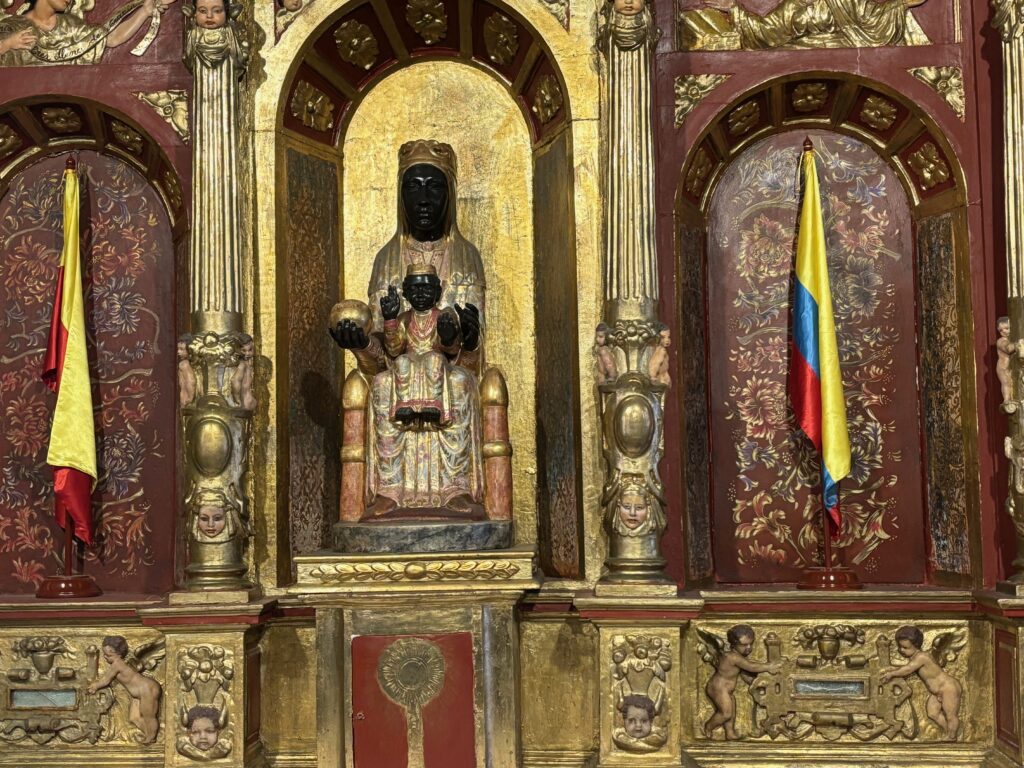
After exploring the church, I had a delightful meal at one of the restaurants. The food was delicious, the ambience perfect, and the views incredible. There is a scenic walking path down, but it was closed for safety reasons. TransMilenio: Las Aguas (End of J23 line).
2. La Candelaria: My home during my stay was this downtown historical area. It is known for its colonial buildings, colorful murals, and vibrant street art. La Candelaria’s history dates back to the founding of Bogotá in 1538, becoming the political, cultural, and religious center of the city.
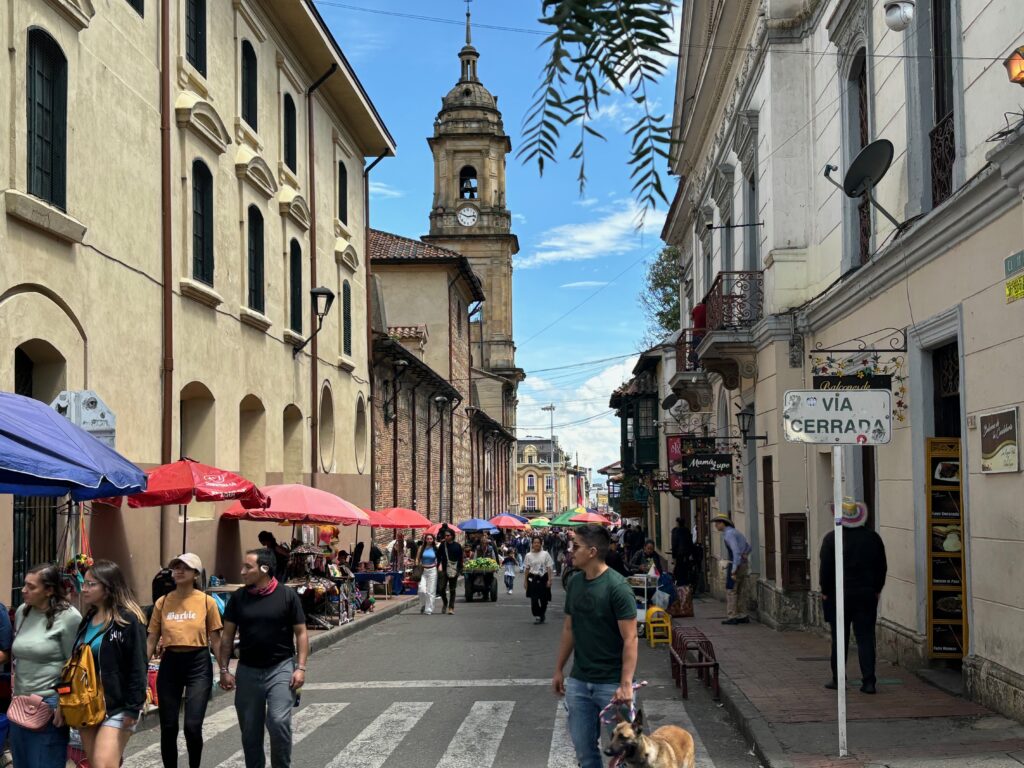
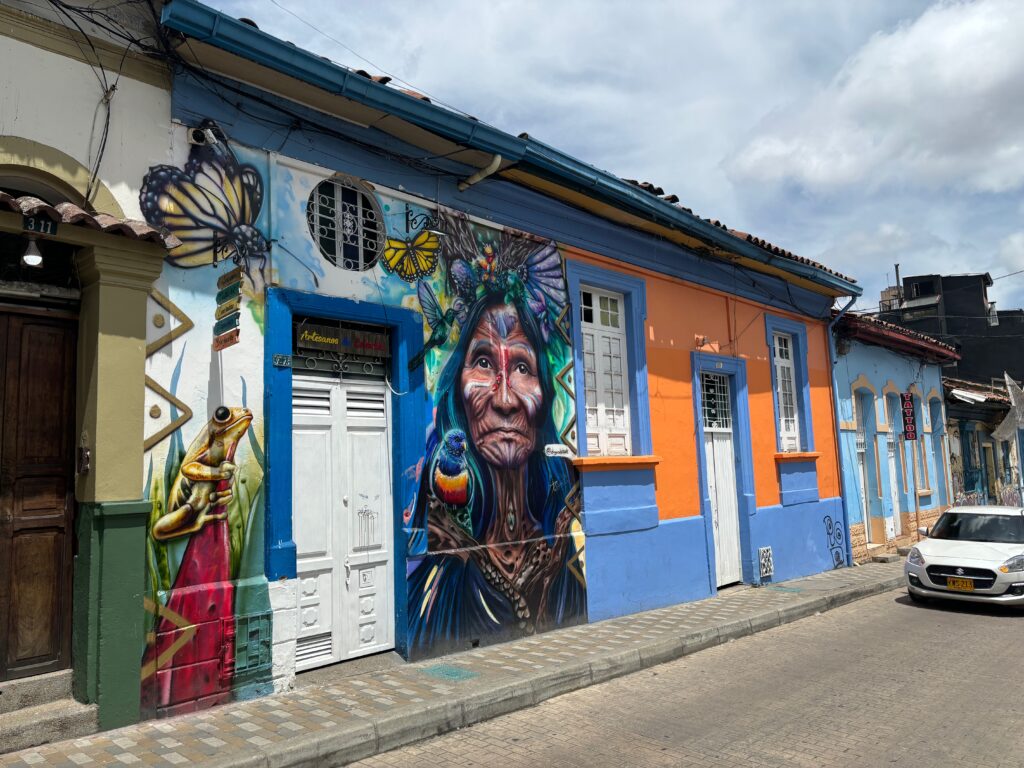
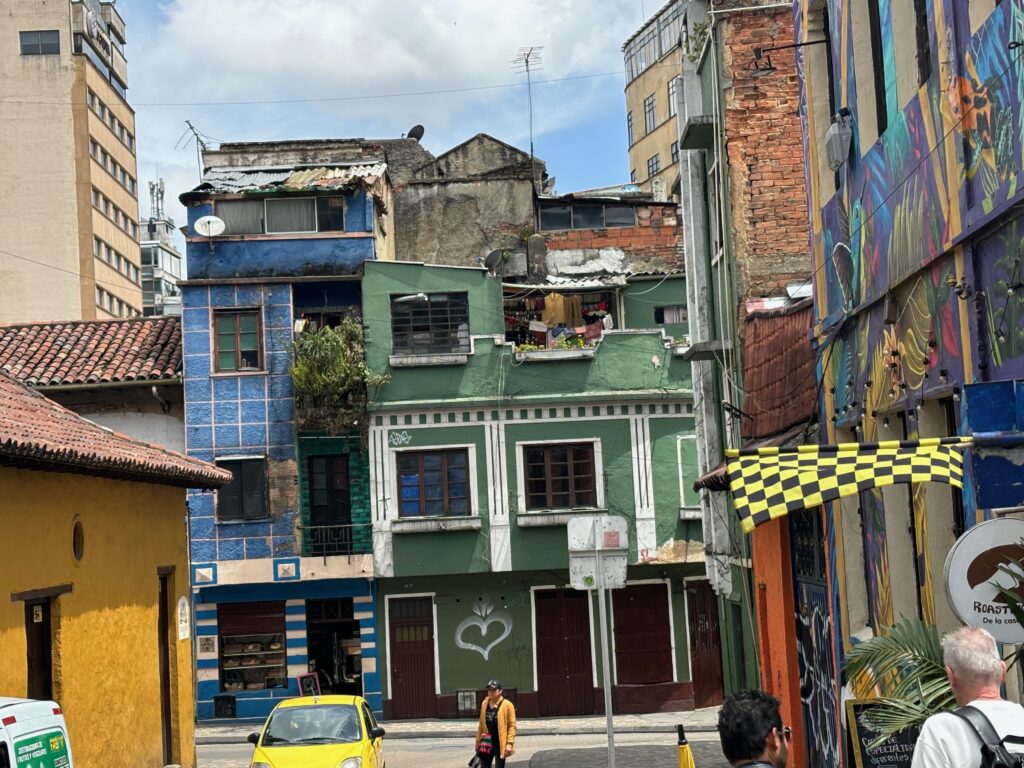
One of the pleasures of wandering down the cobblestone streets is encountering the magnificent murals and street art on many of those buildings—very colourful pieces of art that blend creativity and social commentary.
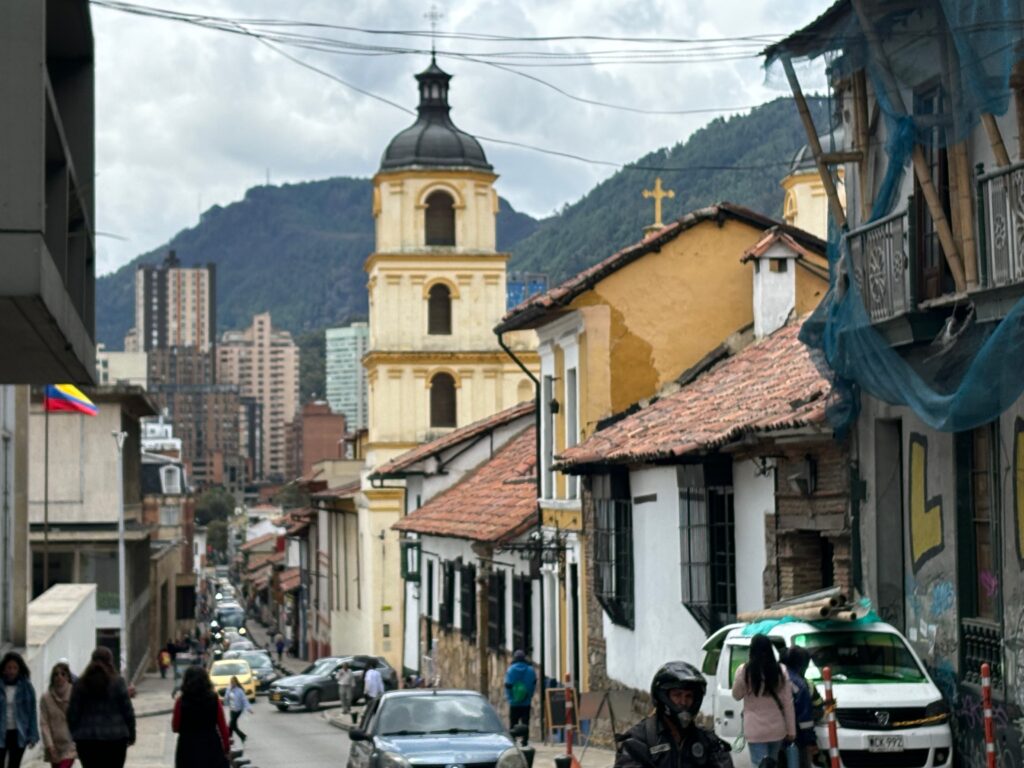
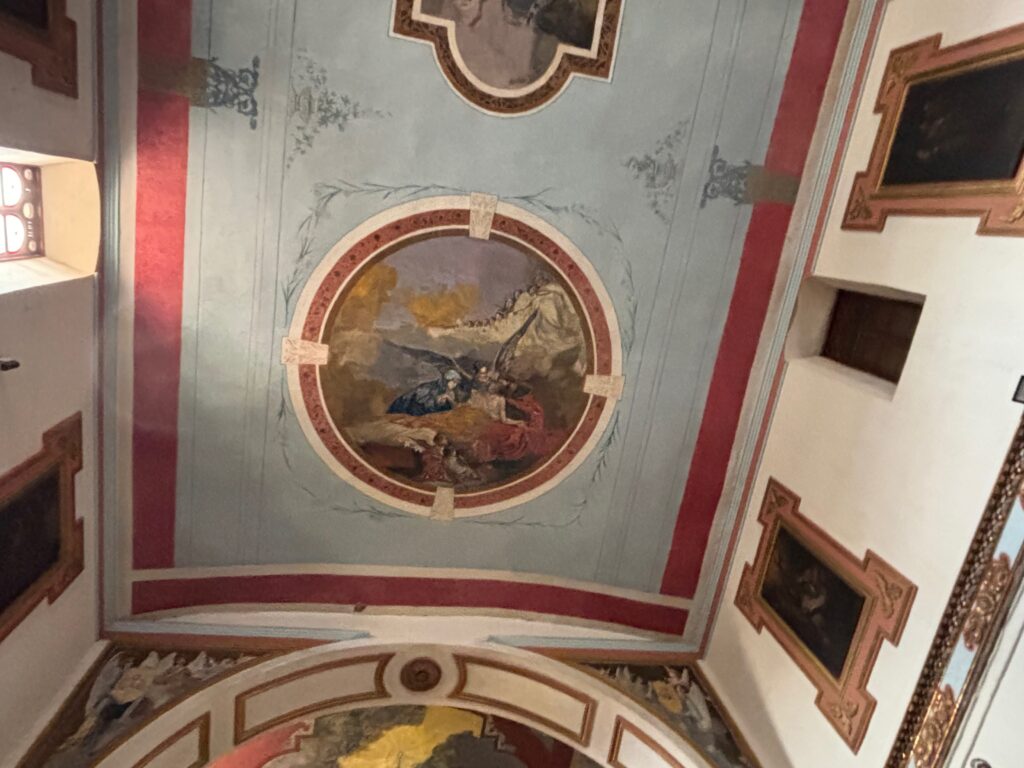
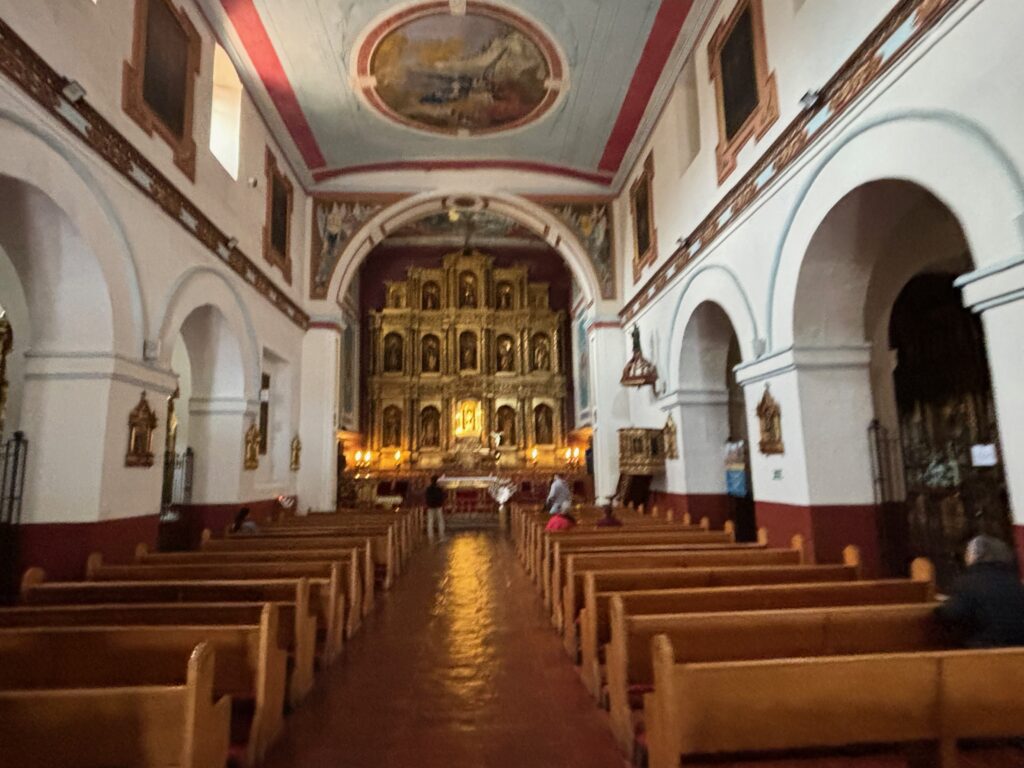
3. The Iglesia de Nuestra Señora de la Candelaria, built in 1686, is dedicated to Our Lady of the Candles. The church i is renowned for its Baroque architecture and rich interior decorations, which celebrate that legend and showcase the influence of Spanish colonization. According to legend, the Virgin Mary appeared holding the Child Jesus and a candle, symbolizing the light of Christ. She is revered as the protector against darkness and evil. TransMilenio: Museo del Oro (J23 line)
4. Botero Museum: This gorgeous building is dedicated to Colombia’s most famous artist, Fernando Botero (born in Medellín in 1932 and died in Monaco in 2023). I’ve seen Fernando Botero’s works all over the world, but this quantity is in one place. Botero generously donated a significant portion of his works, along with pieces from his personal collection of other famous artists (Monet, Miró, Sisley), to establish this Botero Museum.
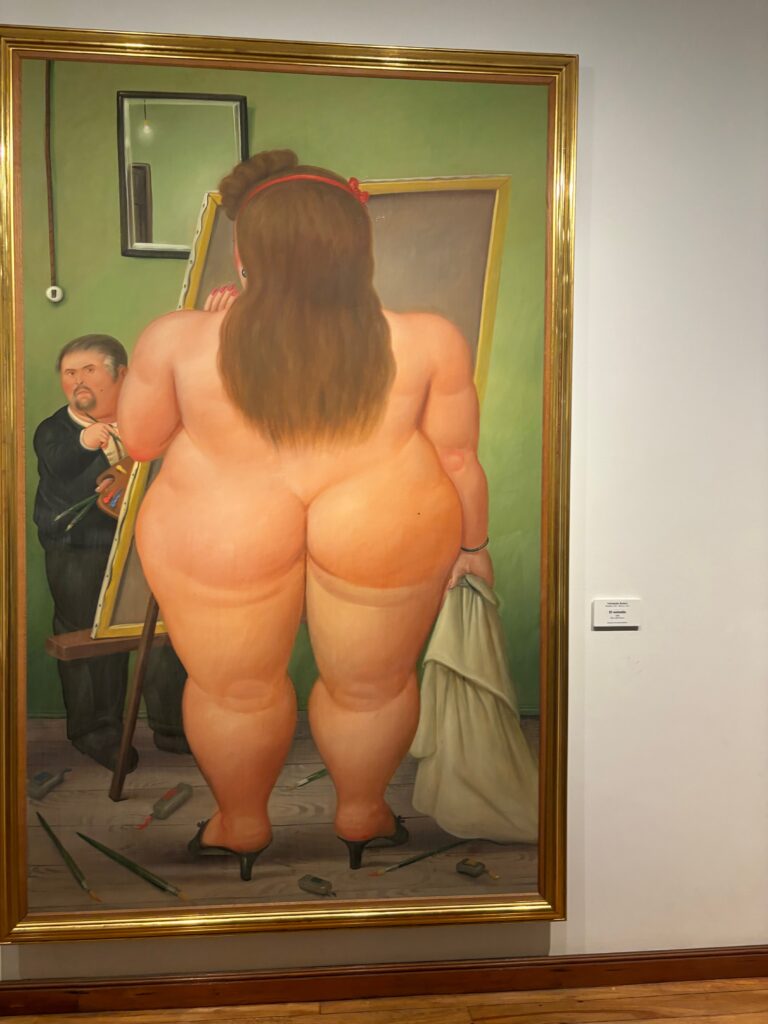
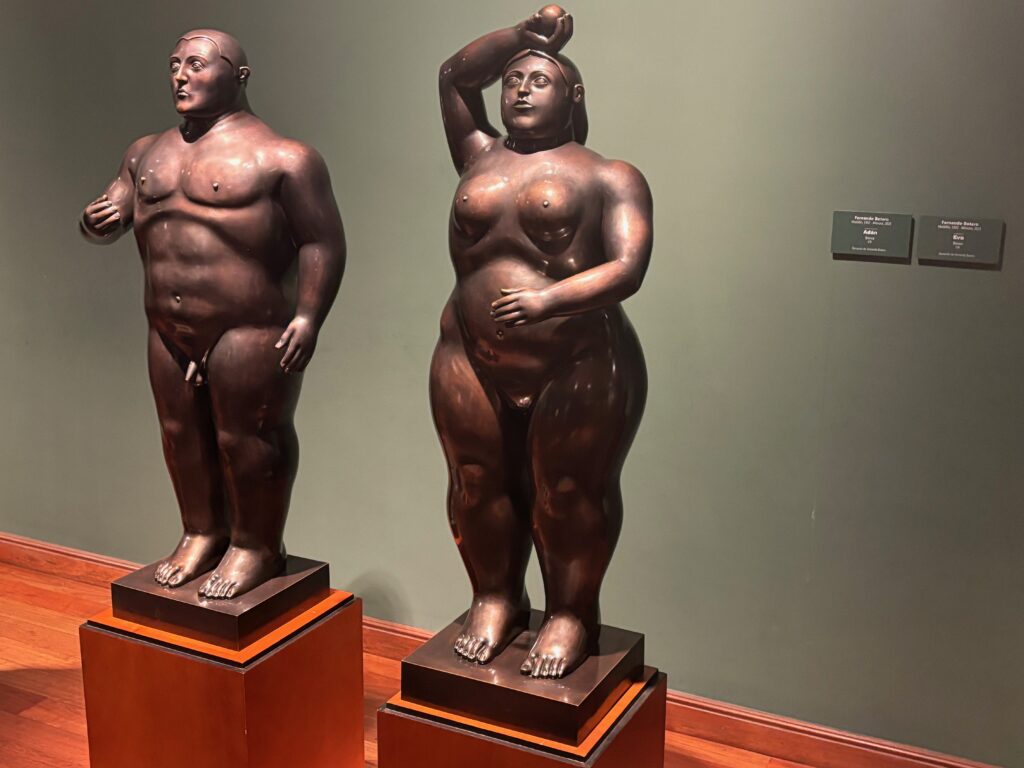
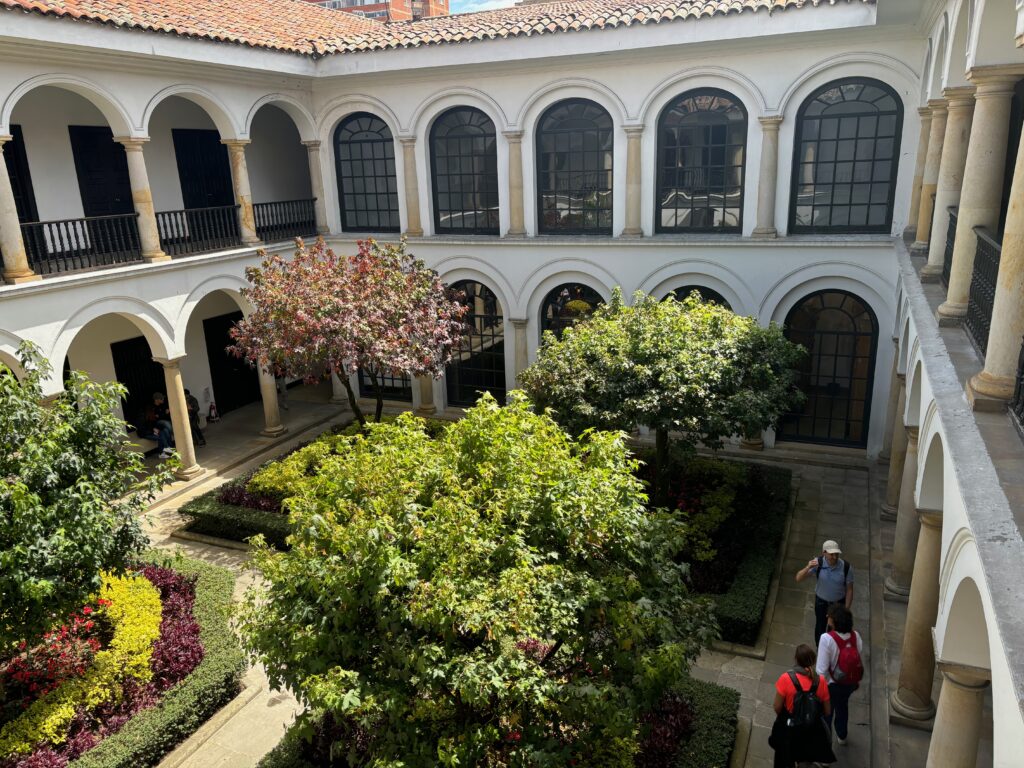
His pieces are known for their larger-than-life appearance and biting political commentary, critiquing social and political issues such as poverty, violence, and corruption through the use of exaggerated forms and proportions to convey powerful messageThe museum is free to enter—a stipulation that Botero insisted . The site is also attached to the Museo de Arte del Banco de la República, with a lovely café between them. TransMilenio: Las Aguas (End of J23 line)
5 .Plaza de Bolívar: The historic heart of Bogotá, Plaza de Bolívar is the city’s main square, surrounded by significant landmarks. It is bordered by the National Capitol, the Palace of Justice, the Liévano Building (the mayor’s office), and the Metropolitan Cathedral Basilica, completed in 1823.

The plaza, a roughly rectangular area of about 13,903 square meters (149,600 square feet), is slightly larger than London’s Trafalgar Square but smaller than New York’s Times Square. At its center stands a statue of Simón Bolívar, the liberator of Colombia and several other South American countries. TransMilenio: Museo del Oro (J23 line)—although construction downtown may affect access.
6. Chapinero: A trendy and diverse district known for its cafes, nightlife, and the iconic Zona G, G is for “Gourmet”.) Iin the Chapinero Alto area, between calle 75 and 85 and carrera 7 to 4 is Bogotá’s gastronomic hub, offering a wide variety of restaurants and cafes catering to every taste. TransMilenio: Calle 72 (K23 line)
7. Usaquén: A charming neighborhood with a colonial past, now known for its weekend flea market, lively plazas, and excellent restaurants. TransMilenio: Calle 127 (C29 line)
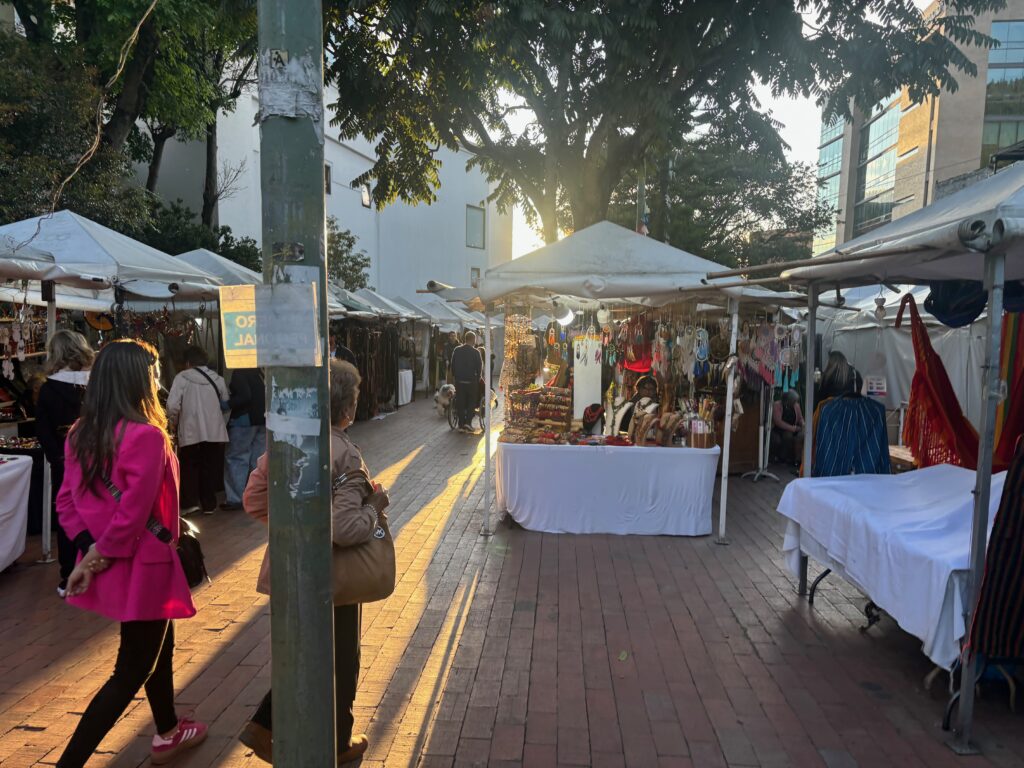
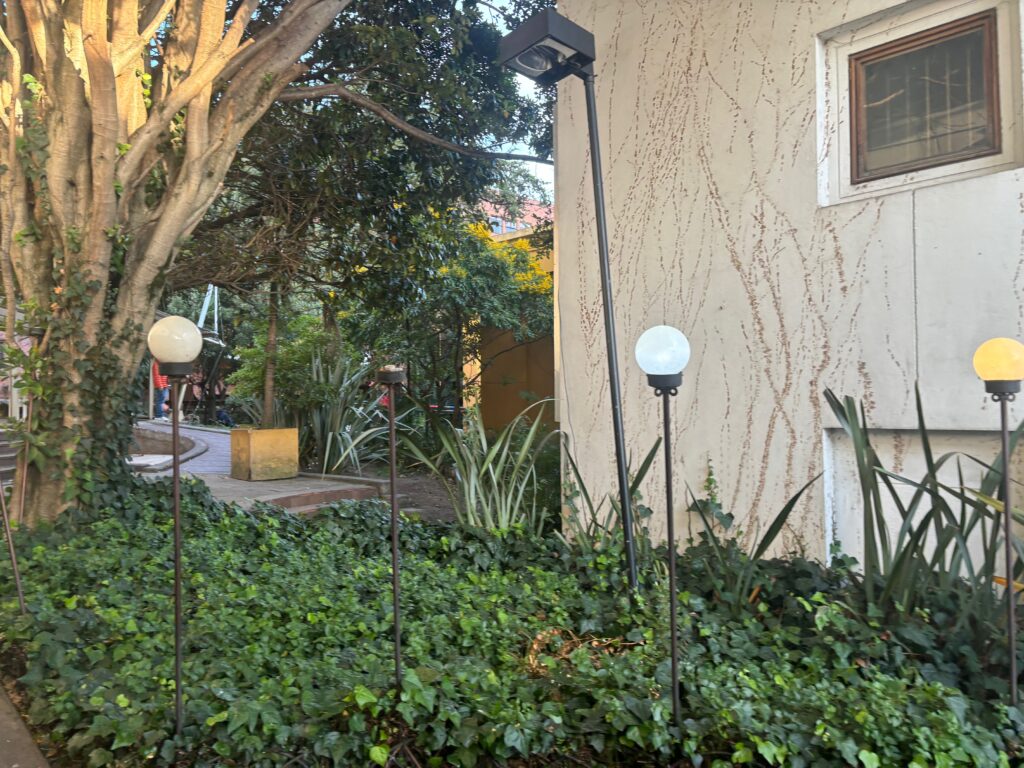
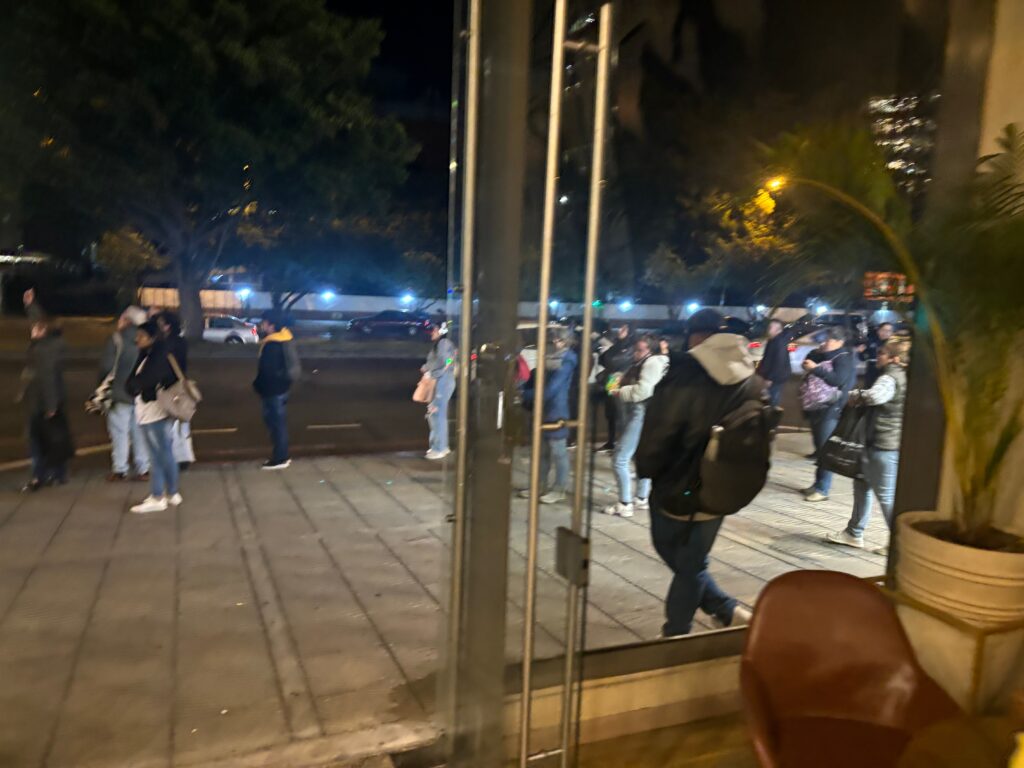
8. Parque Simón Bolívar: The city’s largest green space, offering a peaceful escape from the urban hustle. It’s a great spot for jogging, cycling, or simply relaxing. TransMilenio: Simón Bolívar (C15 line)
9. Jardín Botánico: Bogotá’s botanical garden featuring diverse plant species from Colombia’s various climates. It’s a serene spot for nature lovers. TransMilenio: Simón Bolívar (C15 line)
10. Museo del Oro: One of Bogotá’s most famous museums, showcasing pre-Columbian gold artifacts. TransMilenio: Museo del Oro (J23 line)
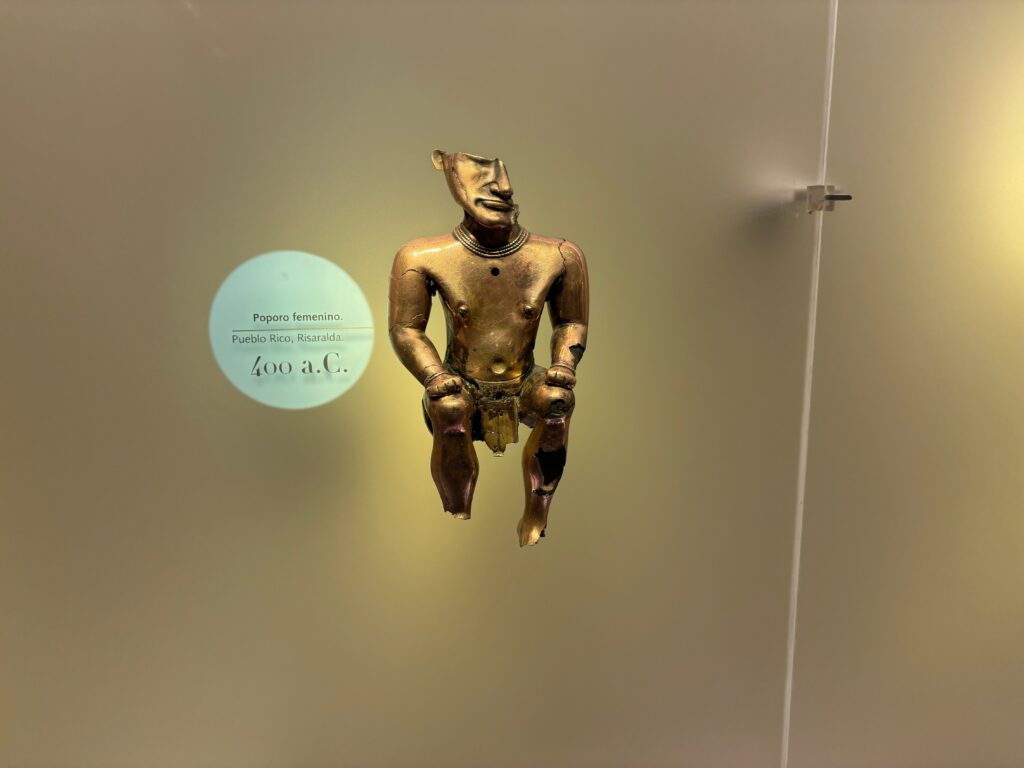
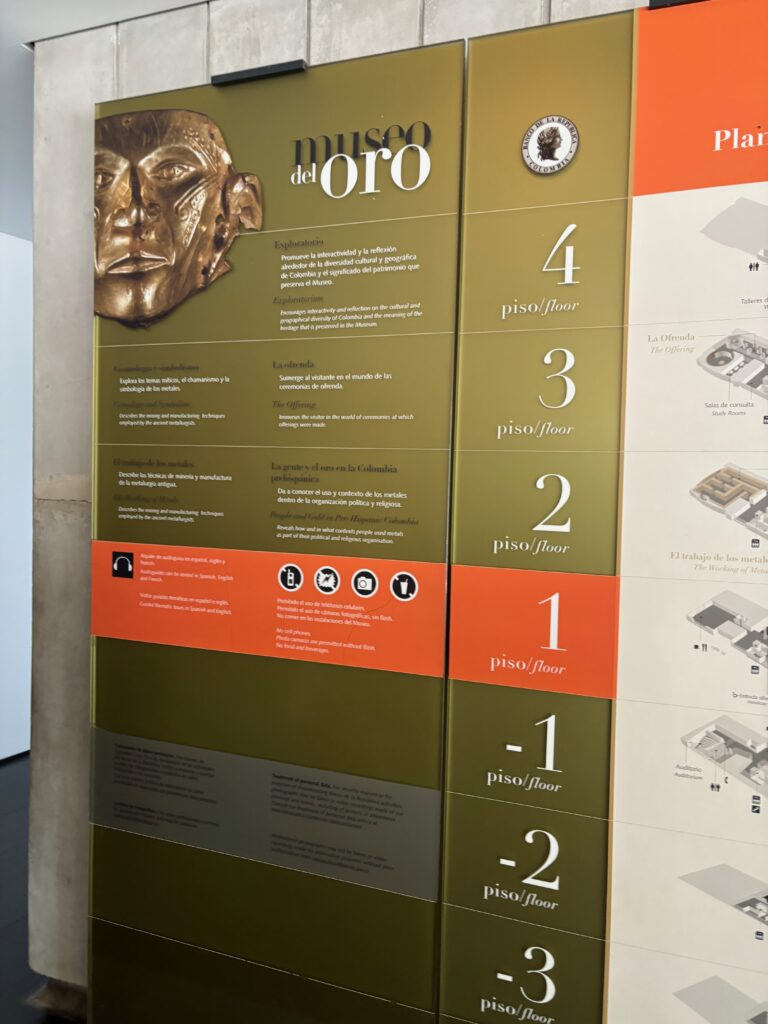
11. Zona Rosa/ Zona T: Bogotá’s upscale shopping and entertainment district, known for its luxury boutiques, restaurants, and the epicenter of Bogotá’s nightlife, packed with bars, clubs, and restaurants. It’s the place to be after dark. TransMilenio: Héroes (K23 line)
12. Museo Nacional: Colombia’s national museum, housed in a former prison, showcasing the country’s history, art, and culture. TransMilenio: Museo Nacional (K23 line)
13.Teatro Colón: Bogotá’s main theater, a beautiful neoclassical building hosting operas, ballets, and concerts. TransMilenio: Las Aguas (End of J23 line)
14. Salitre Mágico: An amusement park offering a fun day out for families, with roller coasters, rides, and games. TransMilenio: Simón Bolívar (C15 line)
15. Casa de Nariño: The official residence of the President of Colombia, located in the heart of Bogotá’s historic district. TransMilenio: Museo del Oro (J23 line)
16. Salt Cathedral of Zipaquirá: Although technically outside Bogotá, many tours include it as part of their visit to the city. Built 200 meters down in a working salt mine, the Salt Cathedral is an architectural and engineering marvel. The Muisca people extracted salt from this mine before the Spanish arrived, and today, salt mining continues in a different section from the cathedral. As you enter this underground wonder, you’ll find 14 Stations of the Cross, crafted by miners from salt and stone, each illuminated to evoke reverence and contemplation.
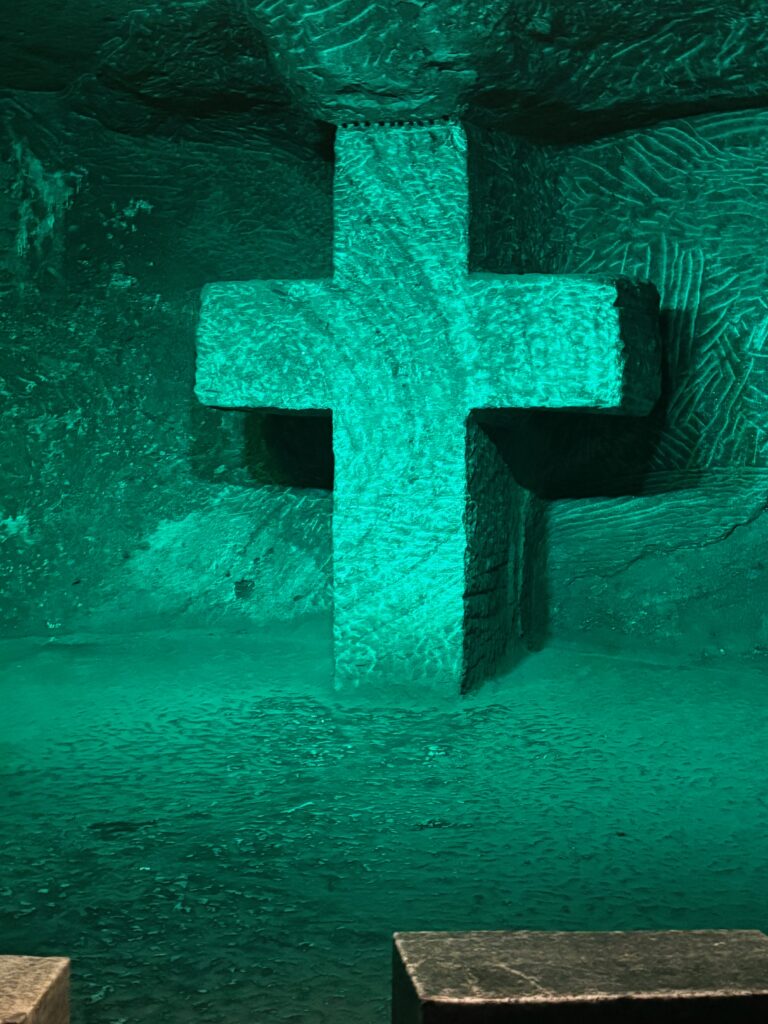
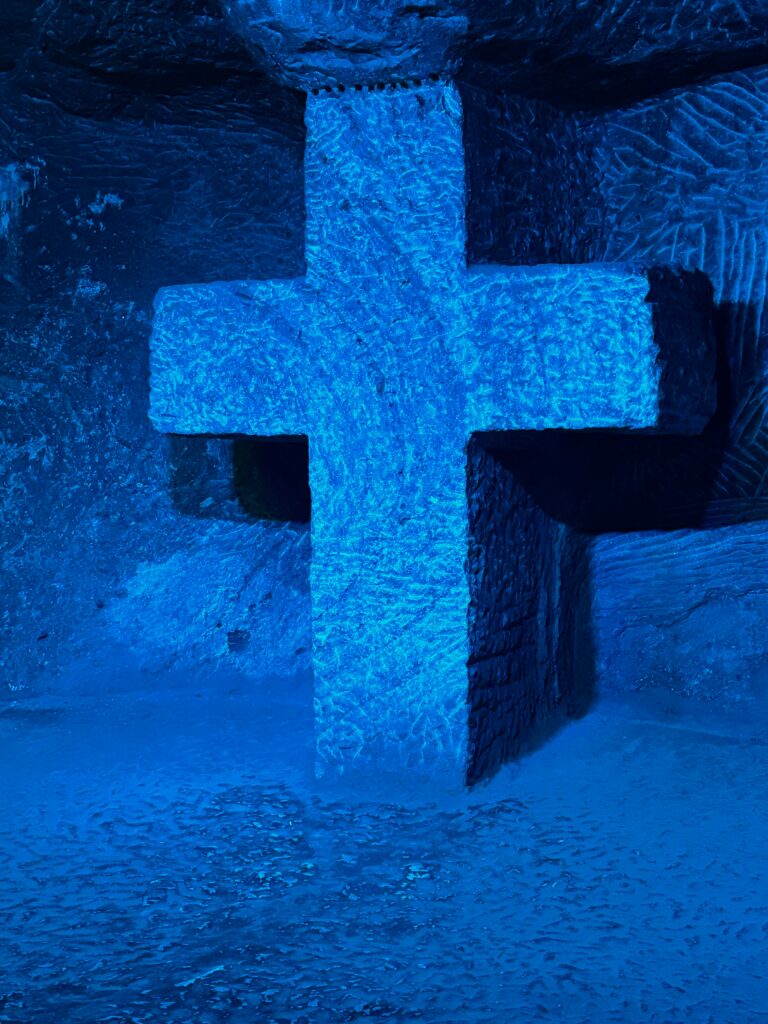
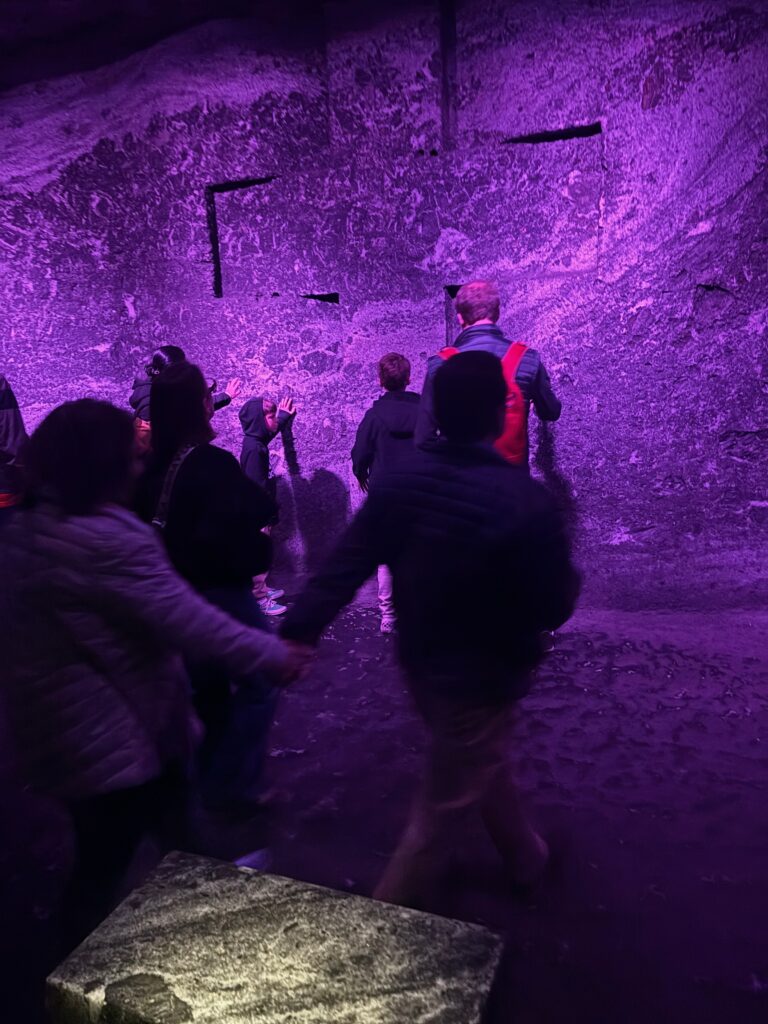
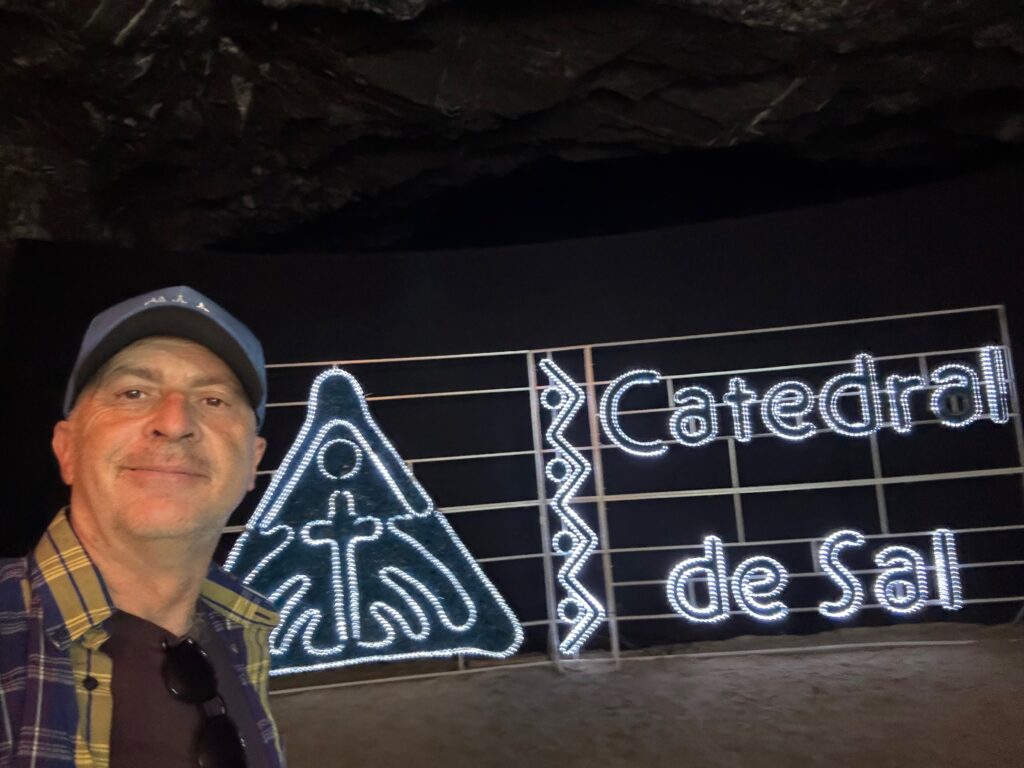
The cathedral’s Great Hall is a 75-meter-long, 18-meter-tall atrium that regularly hosts concerts, weddings, and other events due to its superb acoustics. Adding to the cathedral’s uniqueness, guides proudly point out that it houses the deepest cross on Earth. I was amazed to discover a vast underground area featuring a food court, a shopping area selling jewellery, arts, crafts, and religious souvenirs, a mining exhibit, and an art gallery. Getting there: By car, by tourist train, or on a tour from Bogotá.
17.TouristTren:
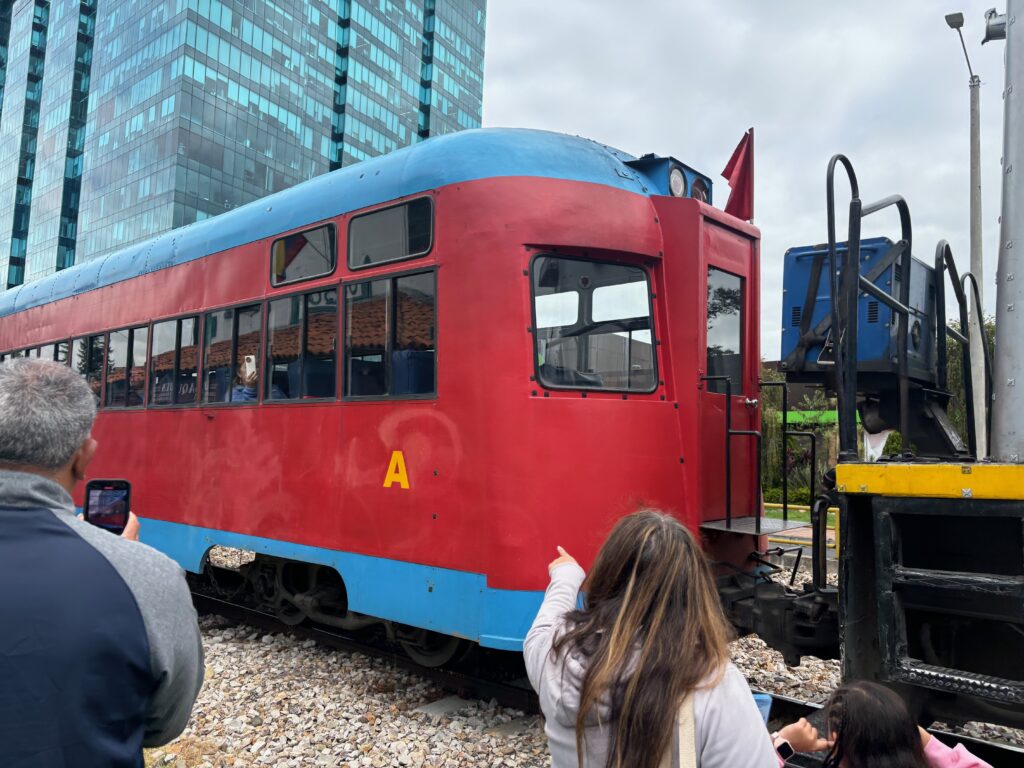
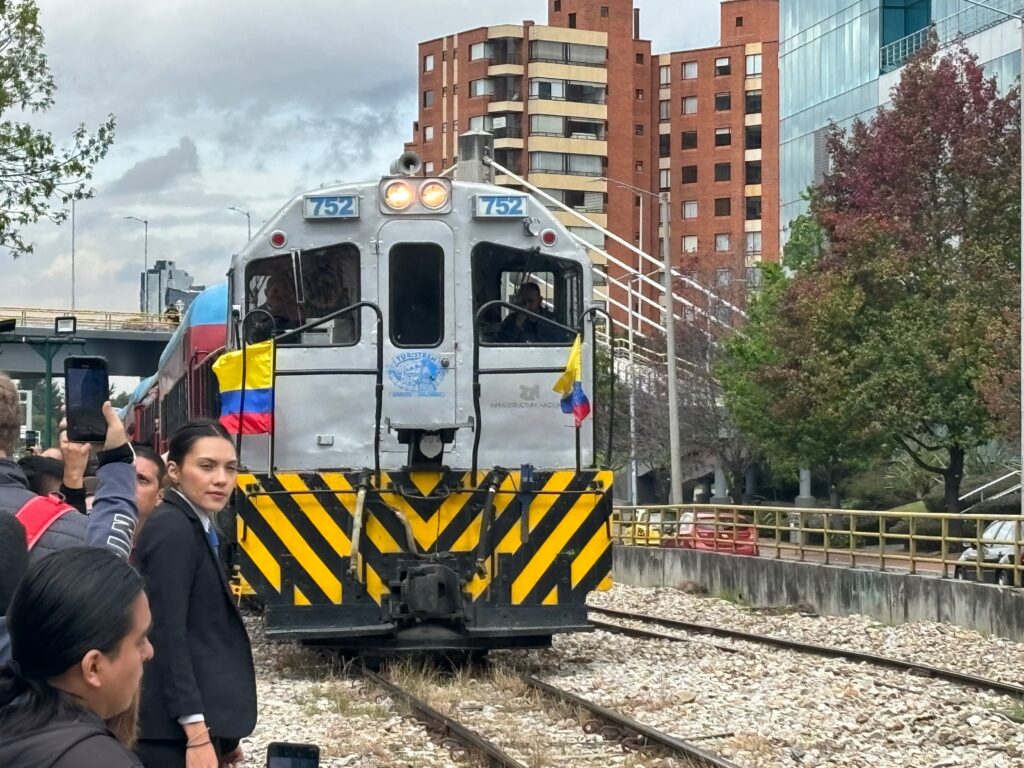
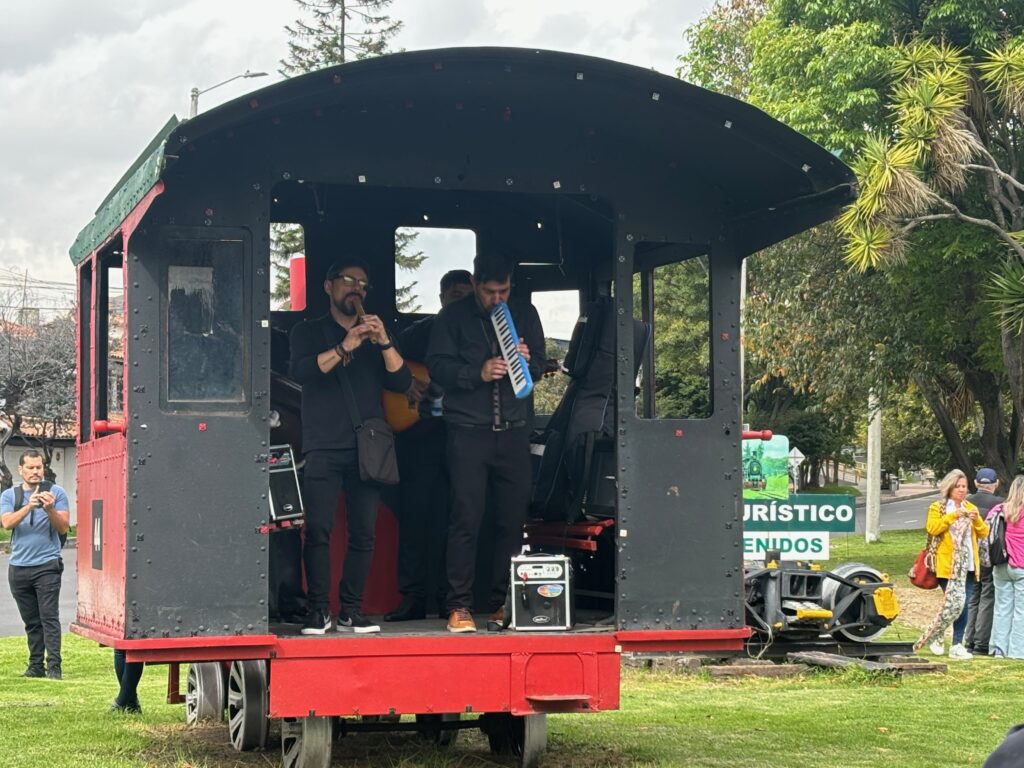
Several rail lines once connected to Bogotá, but today the city only has one tourist train service that operates on weekends and some holidays, running slowly from Bogotá to Zipaquirá, home to the famous Salt Cathedral. My taxi driver didn’t even know there was a train station in Bogotá and was surprised when we arrived to find a crowd.
Everyone was friendly, and the staff were delightfully helpful. The train rolled leisurely along a bumpy track, with comfortable seats and large windows showcasing suburban apartment complexes followed by lush countryside. Local vendors offered regional snacks, and a band played aboard. It was a hugely fun day.
18. Town of Zipaquirá: After visiting the Salt Cathedral, I wandered through the cobblestone streets of Zipaquirá, admiring the preserved buildings, cute shops, nice-looking cafes, and the lively main square, Plaza de los Comuneros. I also popped into mass at the church on the square. There are some superb restraunats here.
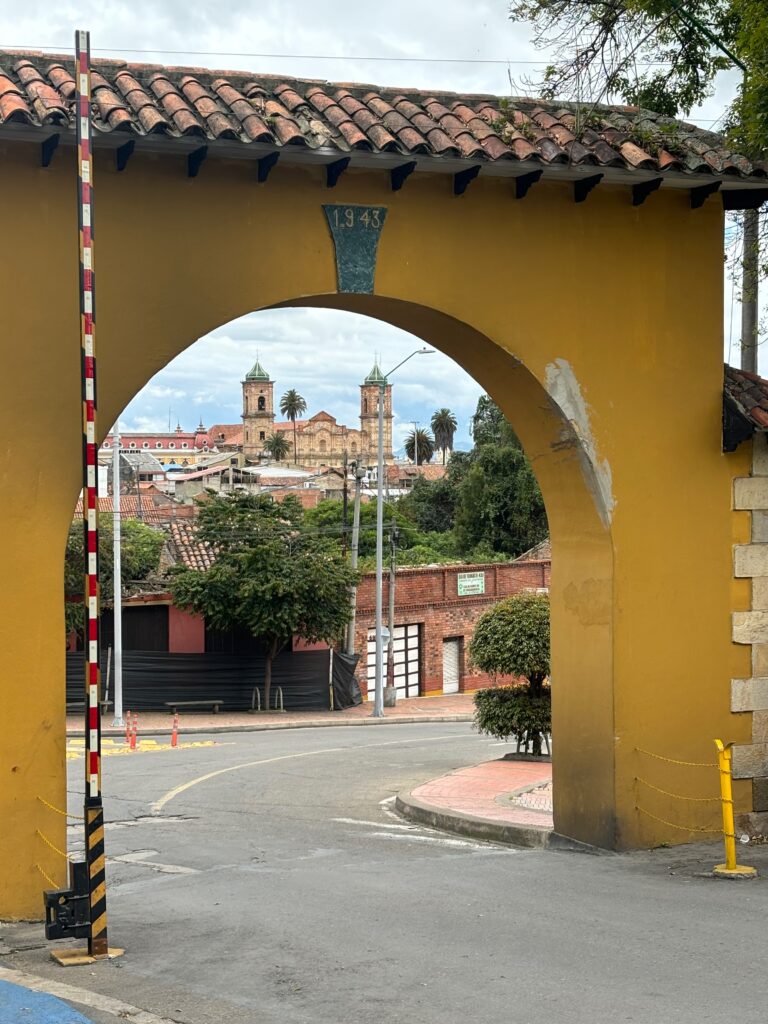
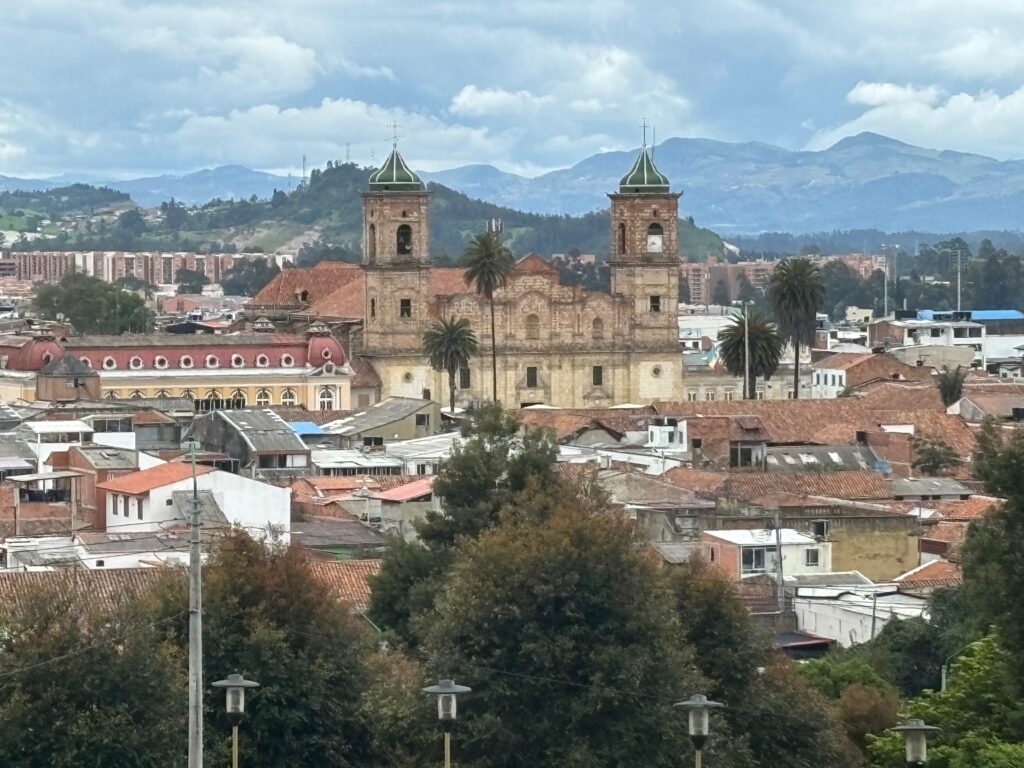
Crime and Safety: 21%
While Bogotá has improved in recent years, it’s vital to stay vigilant. Being aware of your surroundings, keeping a low profile, not carrying or showing valuables, and having minimal cash on hand are crucial. It astounded me how many tourists carry phones and wallets in back pockets, speak loudly to each other, and wear obvious jewelry! I met one guy who had his backpack stolen from under his feet inside a cafe!
Bogotá, like many large cities, has its challenges with crime. Petty theft is the most common issue, especially in crowded areas like TransMilenio stations and markets. While the city has improved its security in recent years, it’s still important to stay vigilant, keep valuables hidden, and avoid certain areas after dark.
Climate and Weather
Bogotá enjoys a subtropical highland climate, with mild temperatures year-round due to its high altitude. The average temperature ranges from 7°C to 19°C (45°F to 66°F). The city experiences two rainy seasons, from April to May and from October to November, which can bring heavy downpours. The best times to visit are during the drier months, from December to March and June to September.
Costs
Bogotá is relatively affordable compared to other global capitals, though prices can vary. Here’s a general idea:
- A meal in an inexpensive restaurant costs around COP 15,000 to 30,000 ($4 to $8 USD).
- Mid-range restaurants typically cost between COP 50,000 to 80,000 ($13 to $20 USD).
- Four-star hotels range from $70 to $120 USD per night.
- A five-kilometre (three-mile) taxi ride costs around $3 USD.
Food
I enjoyed local food and drink: ajiaco (chicken and potato soup), arepas (corn cakes), and, of course, Colombian coffee. The flavors were rich, and the dishes offered a comforting taste of Bogotá’s culinary traditions.
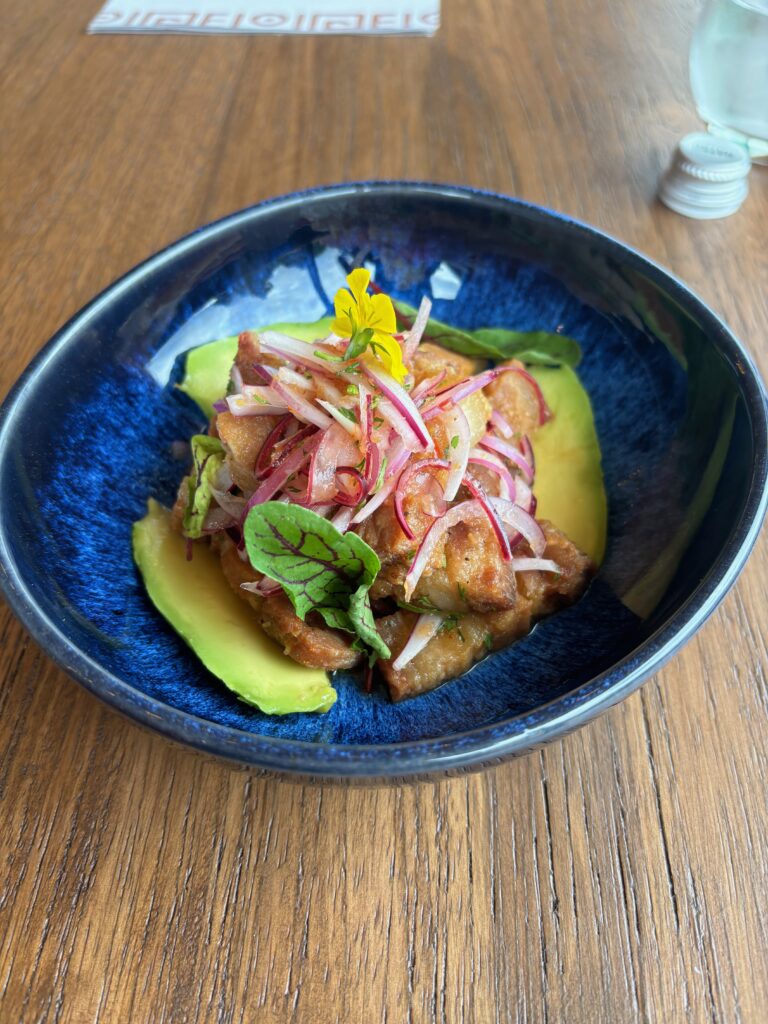
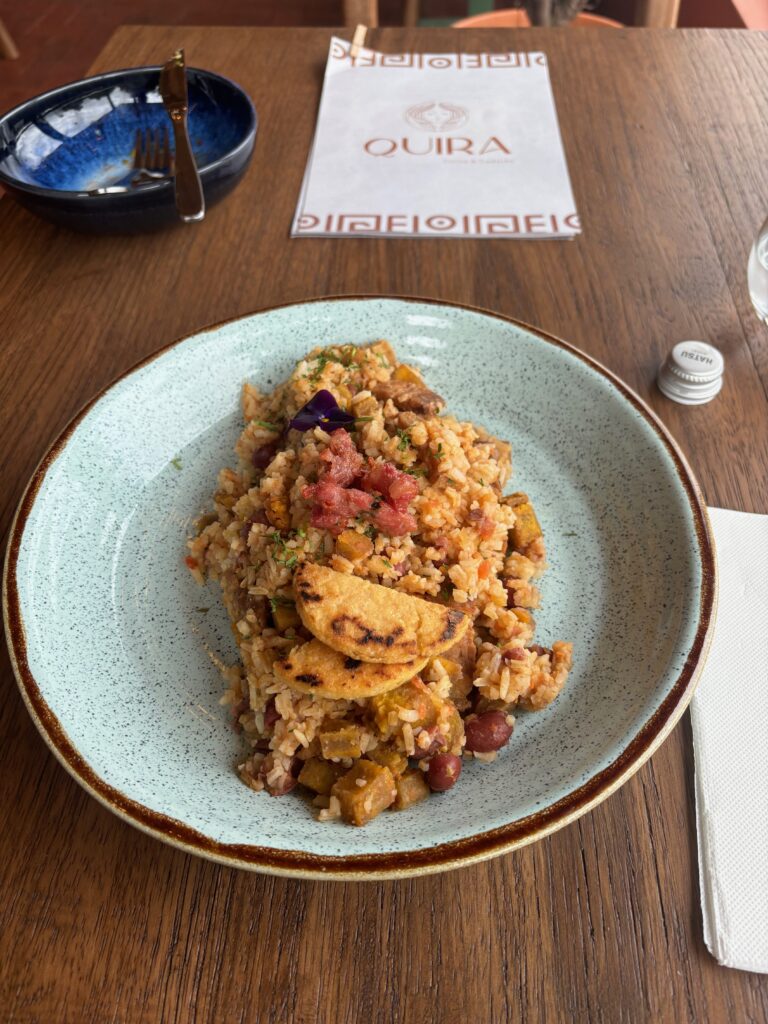
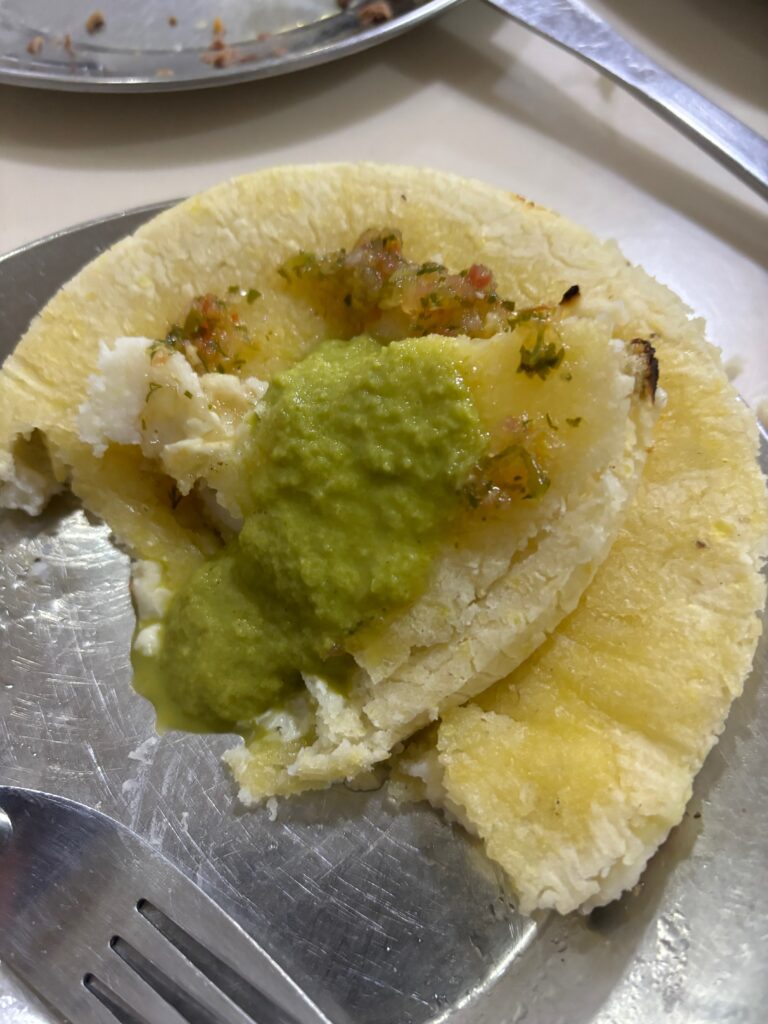
Bogotá’s culinary scene is diverse and reflects Colombia’s rich food heritage. Here are some must-try dishes:
- Ajiaco: A hearty chicken soup with potatoes, corn, and guascas, a local herb.
- Bandeja Paisa: A traditional dish from the region, featuring beans, rice, pork, plantain, and avocado.
- Arepas: Corn cakes often filled with cheese or meats, a staple of Colombian cuisine.
- Empanadas: Fried pastries stuffed with meat, cheese, or potatoes.
- Tamales: Corn dough filled with meat, vegetables, and spices, wrapped in banana leaves.
- Changua: A traditional Bogotá breakfast soup made with milk, eggs, and scallions.
- Chocolate Santafereño: Hot chocolate served with cheese and bread, a Bogotá specialty.
Coffee Adventures
For a coffee enthusiast like me, Bogotá is pure bliss. The city’s thriving café scene offers endless opportunities to explore and enjoy locally sourced brews. Whether you’re sipping on a simple tinto or a more elaborate coffee creation, Bogotá’s coffee culture is an experience not to be missed.
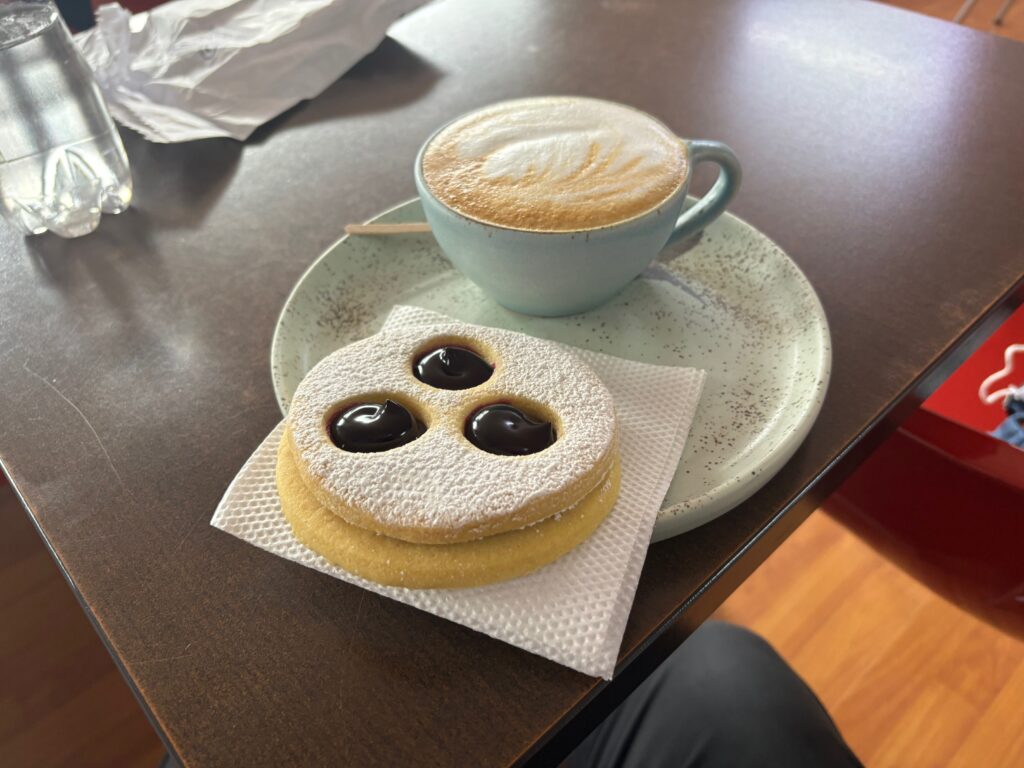
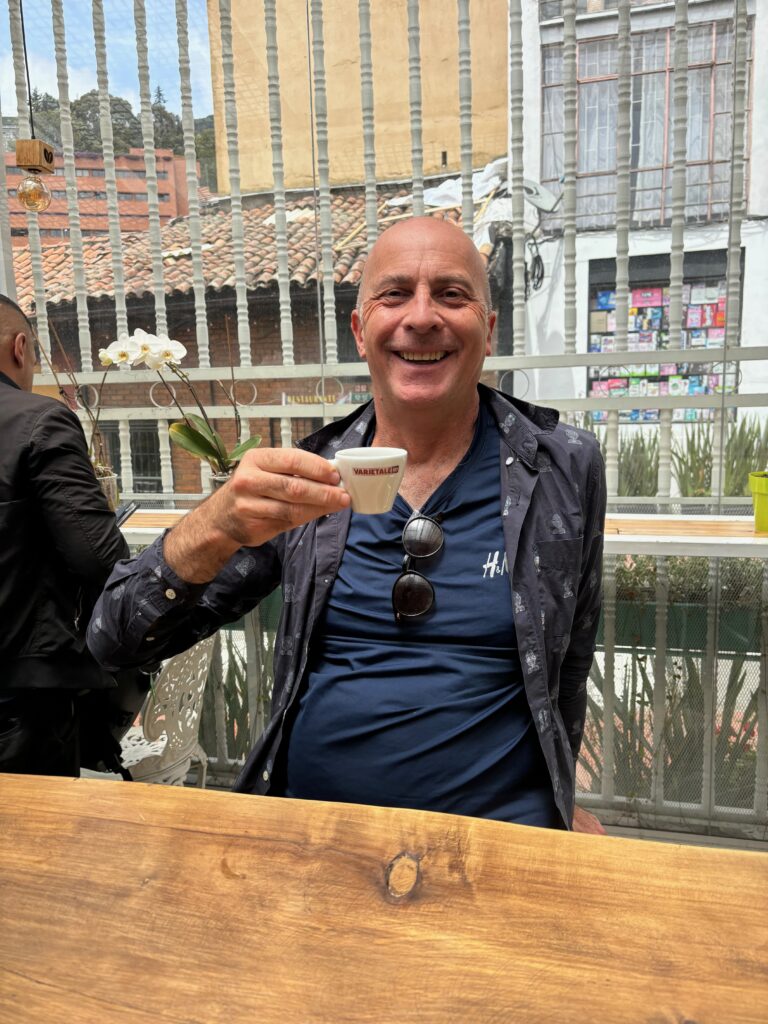
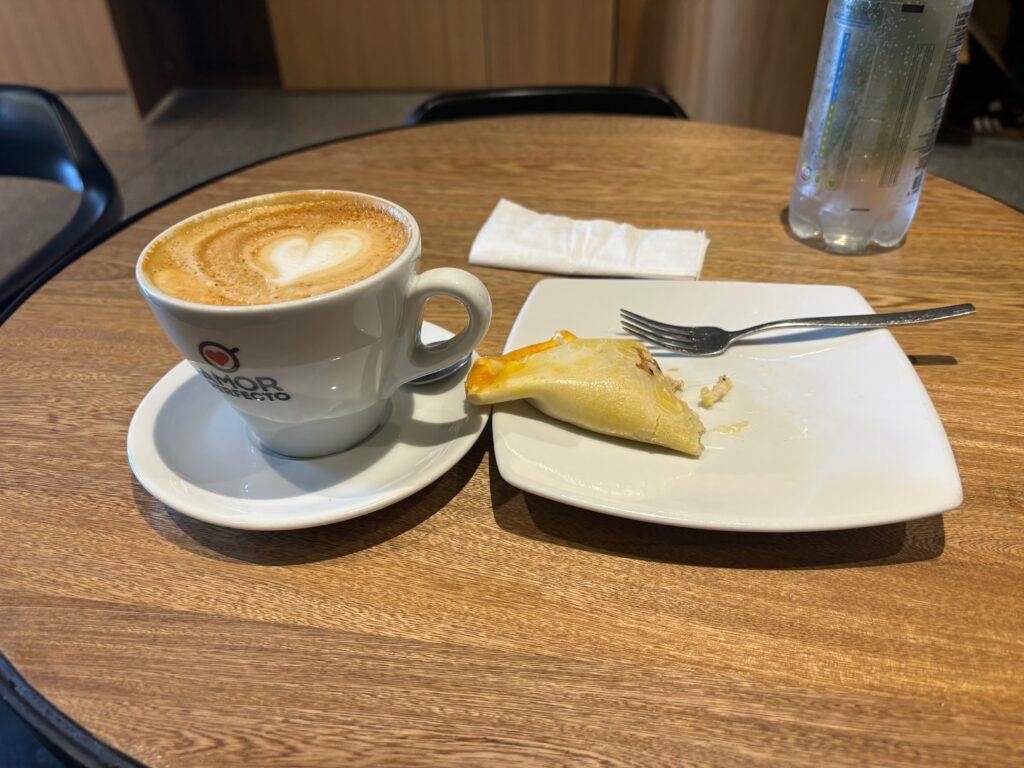
Vibe: 78%
The vibe of Bogotá can be described as dynamic and diverse, with an undercurrent of resilience. It’s a city that pulses with energy, where the old and new coexist in a vibrant, sometimes chaotic, but always intriguing mix. The streets are alive with the sounds of bustling markets, honking taxis, and the chatter of locals, all set against the dramatic backdrop of the Andes. There’s a palpable sense of history here, layered with the grit and determination of a metropolis that has seen its share of challenges but continues to grow and evolve. From the colourful street art of La Candelaria to the modern skyscrapers of Chapinero, Bogotá is a place where tradition meets innovation, creating a unique urban atmosphere that’s both inspiring and complex.
Conclusion
From its breathtaking mountain views to its rich history and dynamic café culture, Bogotá offers an experience that’s both unique and unforgettable. While it might not have made it to the top of my list of Colombian cities, it left an impression that will last. Whether you’re drawn by the city’s bustling streets, its iconic landmarks, or its role as the heart of Colombia, Bogotá is a destination that invites exploration and reflection.
How does Bogotá rank in your travels? If you’ve visited or lived here, I’d love to hear your thoughts on this fascinating city.
Related Posts
- Flat Earth Challenge on the remotest flight: Qantas Business Class Non Stop from Sydney to Santiago
- Santiago: The Heart of Chile
- Under Rated Spokane -16 Top Things for a Great Visit
- Whimsical Portmeirion, Home of “The Prisoner”
- Canterbury: Historic Gem of Southern England
- Stupendous Shanghai
- One Amazing Travel Year: Countless Stories across 23 Countries, 60 Cities


Leave a Reply